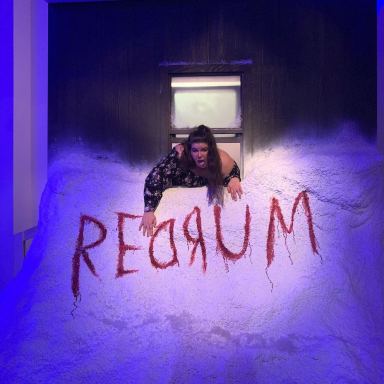Feminist Filmmaking: 100+ Horror Movies Directed by Women
This list catalogs over 100 horror movies directed by women.
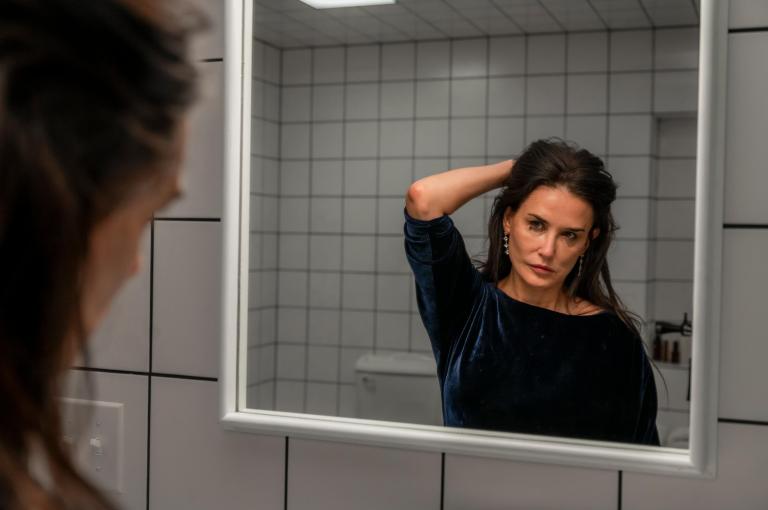
Most people are unaware that filmmaking is an industry women actively participated in from the beginning. The first narrative movie ever made was directed by a woman, Alice Guy-Blaché. She and filmmaker Lois Weber both founded studios in the early 1900s.
Hollywood has been much slower to acknowledge and improve the role of women than other industries of a similar size. A review of the 250 biggest movies of 2018 found that women made up only 8% of directors, 16% of writers, 26% of producers and a similar project in 2013 found they were only 15% of lead actors in the top 250 films. The percentage of female directors in 2018 was actually down from 1998, when 9% of the 250 biggest films were directed by women. Obviously this results in most people over-identifying with male-oriented characters and stories while being unaware that female characters and perspectives are being excluded.
This article catalogs horror movies directed by women. As women’s contributions to film are often overlooked, in some cases we have made exceptions and included films directed by men but written by women along with an explanation of how women contributed to the movie’s success. Details of the history of women in horror discussed here were often sourced from Men, Women and Chainsaws by Carol J. Clover, Women Make Horror: Filmmaking, Feminism, Genre edited by Alison Peirse, House of Psychotic Women by Kier-La Janisse, Recreational Terror by Isabel Cristina Pinedo and Women, Monstrosity and Horror Film by Erin Harrington.
Table of Contents
Top 10 Horror Movies Directed by Women
“Best” is subjective. Leaving room for personal taste, here is our ranking of the 10 best horror movies directed by women:
- Watcher (2022) directed by Chloe Okuno
- The Substance (2024) directed by Coralie Fargeat
- Raw (2016) directed by Julia Ducournau
- Trouble Every Day (2001) directed by Claire Denis
- American Psycho (2000) directed by Mary Harron
- Saint Maud (2020) directed by Rose Glass
- Fresh (2022) directed by Mimi Cave
- Near Dark (1987) directed by Kathryn Bigelow
- Pet Sematary (1989) directed by Mary Lambert
- Jennifer’s Body (2009) directed by Karyn Kusama
Read on for our exhaustive list of horror movies directed by women.
Old Horror Movies Directed By Women
Suspense (1913)
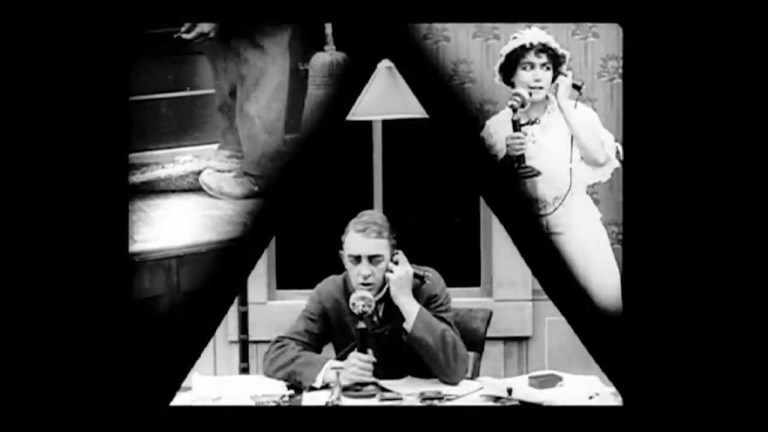
Lois Weber was a director, screenwriter, producer and actress who pioneered sound films in the United States. Suspense is one of the first horror movies directed by a woman (the very first horror movie directed by a woman is the short Turn-of-the-Century Surgery by Alice Guy-Blaché in 1900). Suspense is a short silent thriller about a housewife who tells her husband a vagrant has entered their home just as he cuts the phone line. Her panicked husband steals a car to race home and is pursued by police. The audience is given glimpses of the two plots unfolding via split screen technology, which Weber was the first to use. Weber went on to become the first woman to direct a feature film in 1914, with The Merchant of Venice (now a lost film).
The Hitch-Hiker (1953)
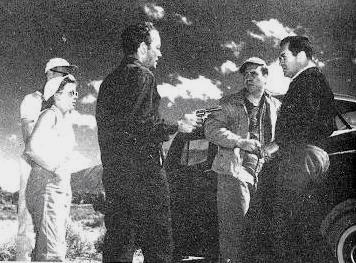
A film noir thriller, The Hitchhiker was co-written and directed by Ida Lupino based on American mass murderer Billy Cook. The film follows two men on a fishing trip from southern California to Mexico who are held hostage by a sadistic hitch-hiker. Lupino worked as an actress in 59 films and directed 8. She was also the only woman to direct an episode of The Twilight Zone in its original run, the episode titled “The Masks.”
Blood Bath (1966)
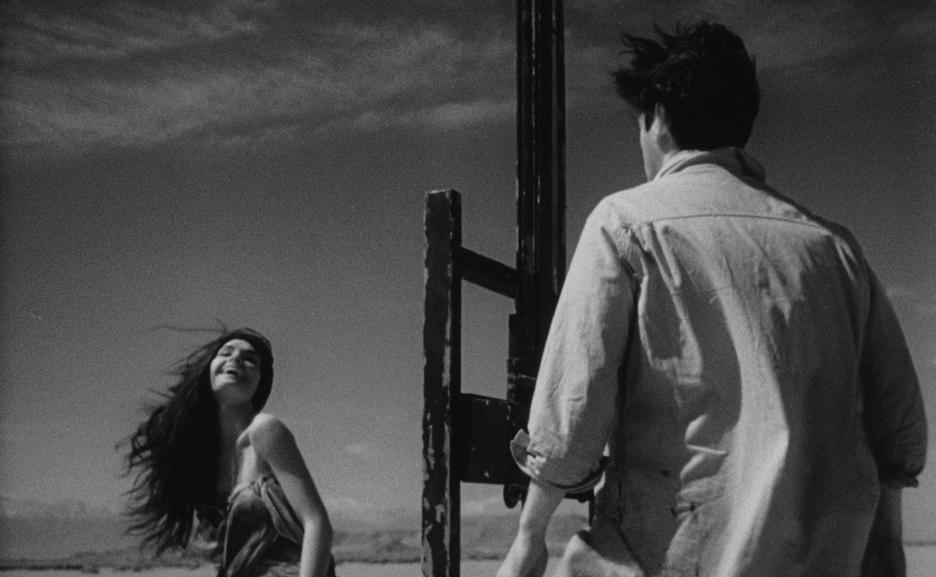
Directed by Jack Hill and Stephanie Rothman, Blood Bath is a horror movie about an artist who turns into a vampire. He meets a ballerina whom he believes is his reincarnated mistress. The convoluted plot is a result of producer Roger Corman being unhappy with Jack Hill’s work and hiring Stephanie Rothman to direct additional scenes. Rothman added the vampire plot and produced a cut Corman was happy with.
The Velvet Vampire (1971)
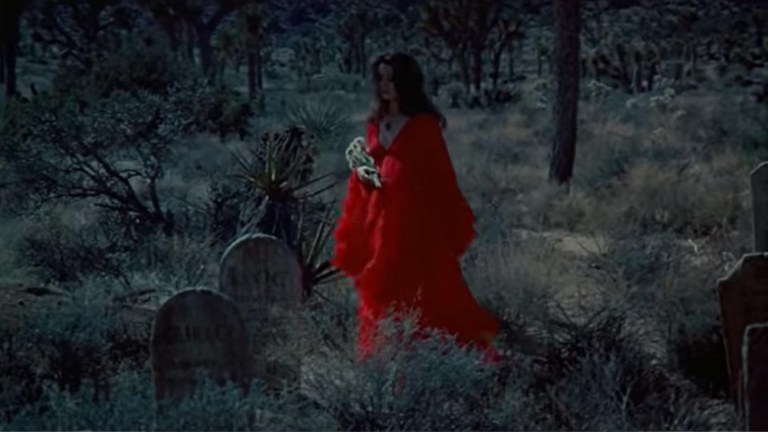
Stephanie Rothman directed this erotic vampire movie about a love triangle between a vampire named Diane LeFanu and a married couple. The surname “LeFanu” is a reference to Carmilla author J. Sheridan Le Fanu. Shot in Mexico, this dreamy and aesthetically pleasing film has become a cult classic. Notably the scenes filmed in Diane’s home create the feeling that the layout of the house is a maze, a technique Stanley Kubrick later became famous for when he used it in The Shining (1980). Rothman retired from filmmaking in 1984 (she was 48), exhausted from the pushback of being a woman in the industry.
I received dire warnings from men who were film executives but not filmmakers, that I would never be allowed to direct, and that even if I were, male crews would never work for me. I have always thought this was a veiled way, or what they mistook for a veiled way, of telling me that they did not want to see me progress.
Stephanie Rothman on working as a female filmmaker
Suspiria (1977)
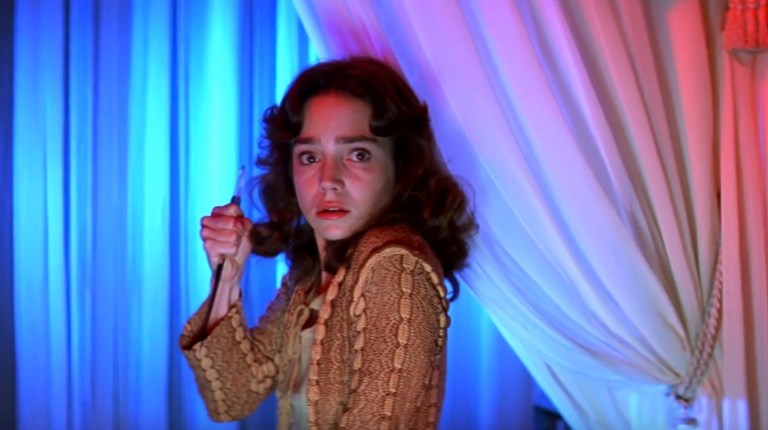
While this Italian horror movie is synonymous with director Dario Argento, recent feminist criticism argues that he may receive too much credit as he frequently centers himself and describes the creation of Suspiria as a solitary undertaking akin to being a “monk in exile”. The story was actually co-created with writer Daria Nicolodi who was only credited as co-writer after pushing back against Argento. Nicolodi wrote the screenplay based on a story her grandmother told her about being invited to take piano lessons at an academy but leaving after encountering teachers who used black magic (Argento disputes this and his word is taken as the authority). She has said, “I really want to stress that in Suspiria, as well as in Inferno there is a lot of myself, my cultural background and my experience, even though Dario did have an inner predisposition towards the genre. He had reached a point where, after the thriller period, he didn’t know which path to take and I suggested the field of fantasy.”
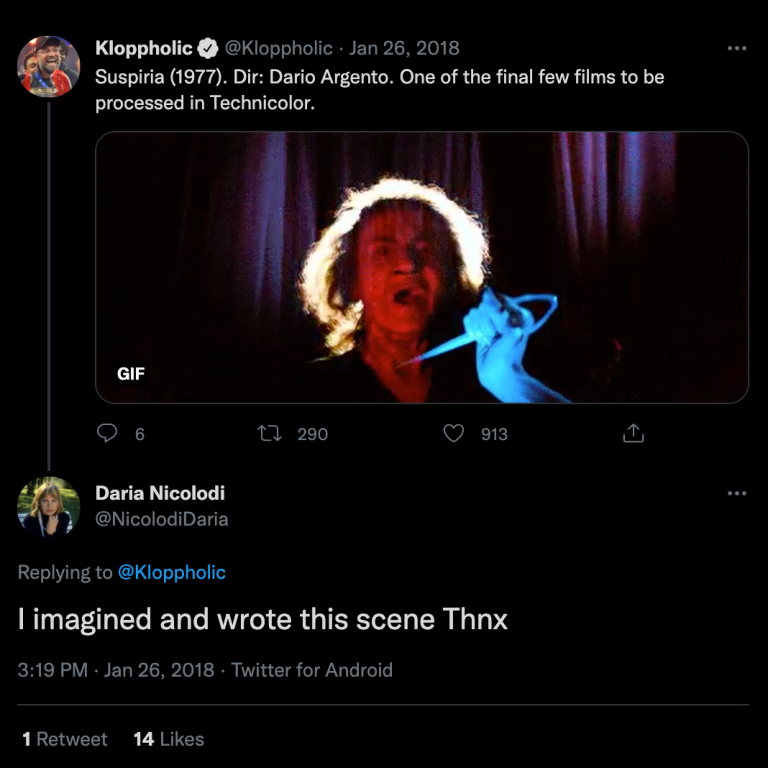
Suspiria necessitates a model of multiple and collaborative authorship. Recent scholarship on multiple authorship has sought to foreground not only the collaborative nature of filmmaking but also models for thinking of films as shaped by multiple authors by paying attention to both film texts and production history.
Martha Shearer, The Secret Beyond the Door
The Mafu Cage (1978)
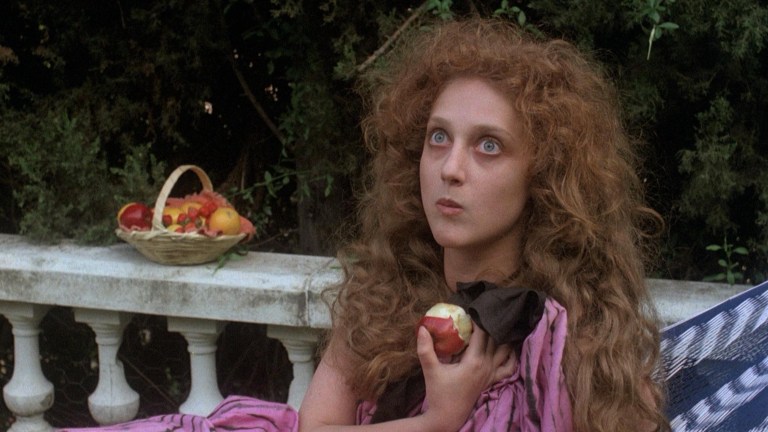
Carol Kane and Lee Grant star as sisters whose father was a famed anthropologist. They live together in a dilapidated Hollywood Hills mansion where one sister keeps a large cage in the living room for her pet monkeys, which she refers to as “Mafus”. Karen Arthur directed and developed the story with writer Don Chastain based on the French play Toi et Tes Nuages.
This newly rediscovered cult classic was previously forgotten as it had not been championed by the boys club like other films of similar quality from the era. Arthur managed to break into Hollywood in 1971 after spending her tax refund on a filmmaking course at UCLA. Her first film was Legacy (1975) which she followed with The Mafu Cage and then Lady Beware (1987). Her experience trying to make feature films was so difficult she quit after Lady Beware and moved to working in television instead.
Humanoids From The Deep (1980)
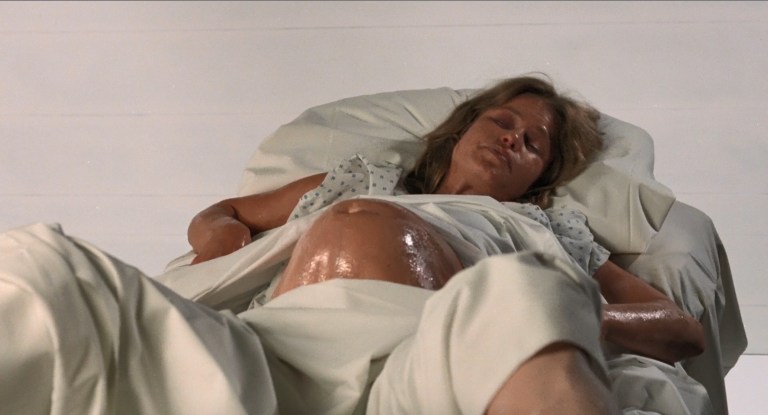
Director Barbara Peeters asked for her name to be removed as director for this film after famed horror producer Roger Corman shot explicit rape scenes without her permission. He refused to take her name off the project. Corman was unhappy with the more nuanced way Peeters shot the rape scenes and had them reshot by James Sbardellati. The final cut of this sci-fi monster movie fulfilled horror stereotypes of the era with graphic nudity and a storyline centered on mutant creatures raping women of a small village.
Of the film, Barbara Peeters says, “I don’t talk about that film… I’ve always — since a small, little girl — been a feminist.”
The Slumber Party Massacre (1982)
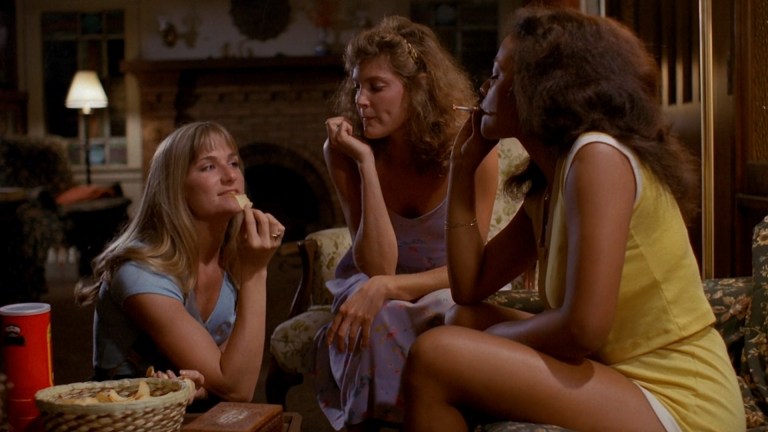
In 1975, Amy Jones served as Martin Scorsese’s assistant while he directed the exploitation vigilante film Taxi Driver. Years later, Jones turned down the opportunity to edit Steven Spielberg’s E.T. for this 1982 directorial debut which was written by feminist Rita Mae Brown. The film follows a slumber party’s dark demise at the hands of a serial murderer who fetishizes power tools. Although this was still a bloody horror with standard nudity screen time for the 80s, the complexities of female friendship, isolation and trust were weaved throughout a storyline that catered to the female experience. Despite having a female director, this film received flack for its exploitation of women, which Jones defended by making comparisons to male directors who did not receive the same criticism for similar works.
Possibly in Michigan (1983)

Possibly in Michigan is an experimental 12-minute horror video written and directed by artist Cecelia Condit. It is both funny and scary. A woman navigates a nonsensical world where she is subjected to much of the same trauma women endure in the real world at the hands of men. In recent years Possibly in Michigan has been rediscovered by Zoomers and gone viral on TikTok. The full video can be viewed on Cecelia Condit’s YouTube channel:
Near Dark (1987)
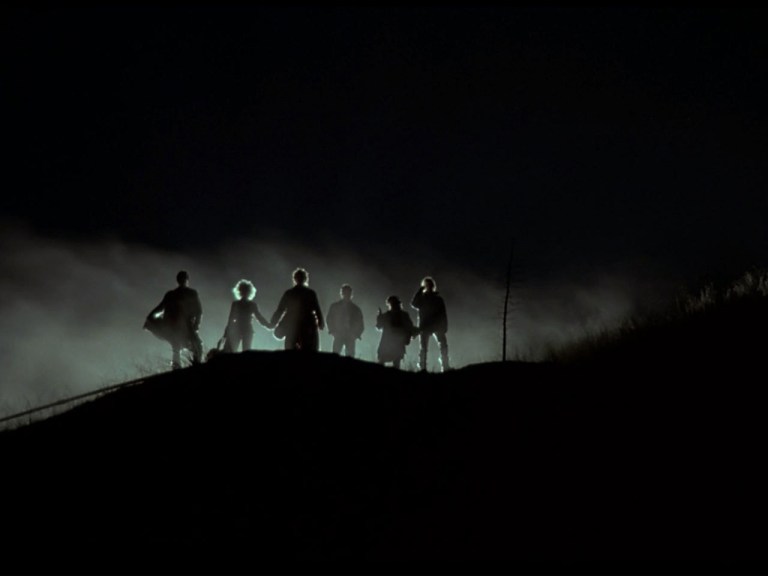
The first woman to win an Academy Award for Best Director, Kathryn Bigelow, made her solo directorial debut with this neo-western vampire movie that became a cult classic. On the surface a film about a farm boy who is initiated into a rowdy gang of vampires, Near Dark also contains tender moments of young love. Bill Paxton and Lance Henriksen portray bloodthirsty vampires. Jenny Wright and Adrian Pasdar retain more of their humanity while also relying on human blood for survival. In addition to directing, Bigelow also co-wrote the screenplay.
Wolf’s Hole (1987)
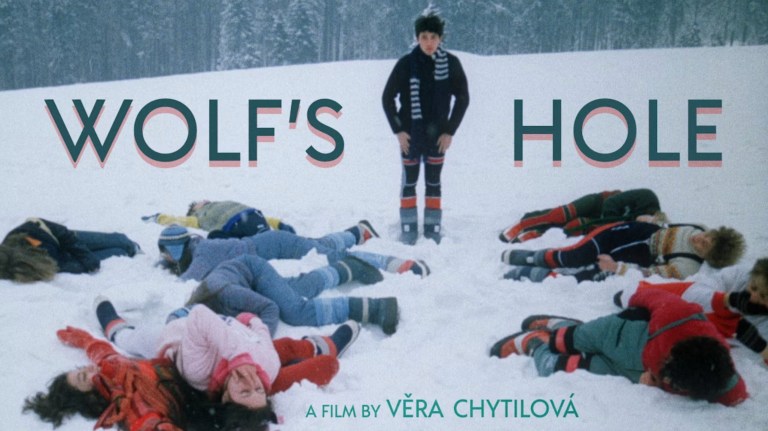
A sci-fi horror movie by director Věra Chytilová, who was the first woman to study directing at the Film and TV School of the Academy of Performing Arts (FAMU) in Prague and a pioneer of Czech cinema. Chytilová’s film Sedmikrásky (in English: Daisies) was banned by the Czechoslovakian government due to the film’s anti-conformist and feminist characters. Her subsequent 1969 film Ovoce stromů rajských jíme (in English: Fruit of Paradise) resulted in Chytilová being banned from filmmaking for seven years. The government also banned her from attending women in film events in the United States but international pressure eventually allowed Chytilová to begin making films again.
Wolf’s Hole appears to conform to the formula of an 80s slasher film before deviating into sci-fi territory. It follows a group of high school students who have been selected for a special skiing class at an isolated cabin in the mountains. The strange instructors turn the students against each other as food becomes scarce, before revealing their true motive for the trip.
Pet Sematary (1989)

Stephen King personally selected Mary Lambert to direct Pet Sematary. She was also the studio’s first choice. Lambert had previously made a name for herself directing music videos and her feature debut, Siesta (1987), was nominated for an Independent Spirit Award for Best First Feature (but lost to Dirty Dancing).
Pet Sematary follows the Creed family as they relocate from Chicago to a small town in Maine, Ludlow. When the family cat is killed on a busy road, their neighbor takes pity and teaches patriarch Louis a town secret: there is an ancient burial ground that will bring the cat back to life. When the family’s young son Gage meets a similar fate, the temptation to bring him back is irresistible.
Credit for Pet Sematary‘s success is also due to female studio executive Lindsay Doran who advocated for the film despite colleagues telling her no one wanted to see Stephen King adaptations anymore.
Mirror, Mirror (1990)
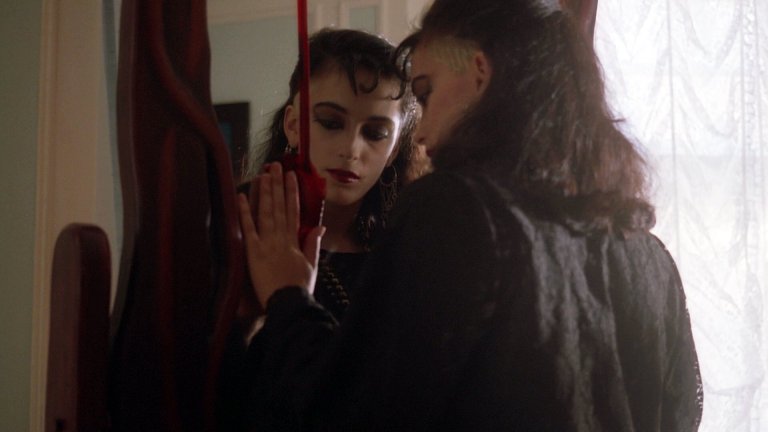
This supernatural horror movie was directed by Marina Sargenti and written by two sisters: Annette Cascone and Gina Cascone. 60% of the total cast and crew were women. Mirror, Mirror is about teen outcast, Megan (Rainbow Harvest), who finds an antique mirror in the attic of her new Los Angeles home. She learns the mirror is demonically possessed and can grant wishes. Bullied at school, Megan uses the mirror and bizarre misfortunes befall those around her.
Freddy’s Dead: The Final Nightmare (1991)
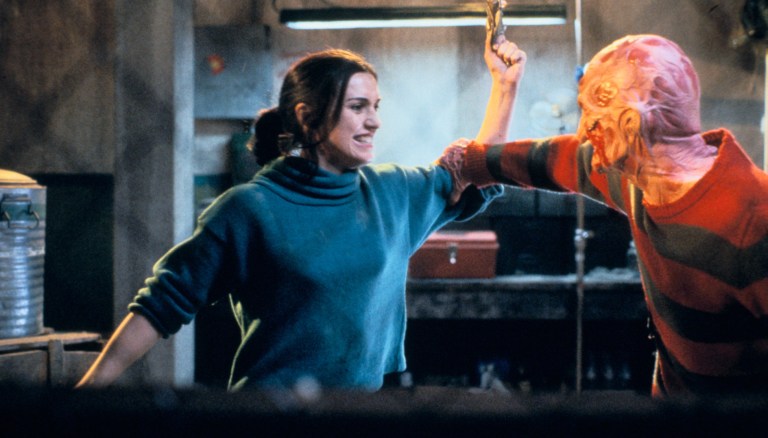
Freddy’s Dead takes place 10 years after the events of A Nightmare on Elm Street 5: The Dream Child (1989). Rachel Talalay, a Yale graduate with a mathematics degree, was chosen to direct because she had produced four films in the franchise. Still, she was given memos that instructed her not to make the film “too girly”. Notably, this is the only Nightmare movie that actually mentions sexual abuse — a concept deemed too gruesome for the original when Freddy’s crime against the parents of Springwood, Ohio was changed from molesting children to murdering them. While the franchise had been teetering on the edge of self-parody since the original, Talalay’s installment embraced camp and infused more humor and self-awareness into the film than previous entries.
Horror may challenge presumptions of “female paranoia” by establishing it ‘as a reasonable response to a world that is hostile to women.’
Tosha R. Taylor, Self-Reflexivity and Feminist Camp in Freddy’s Dead: The Final Nightmare
Ghostwatch (1992)
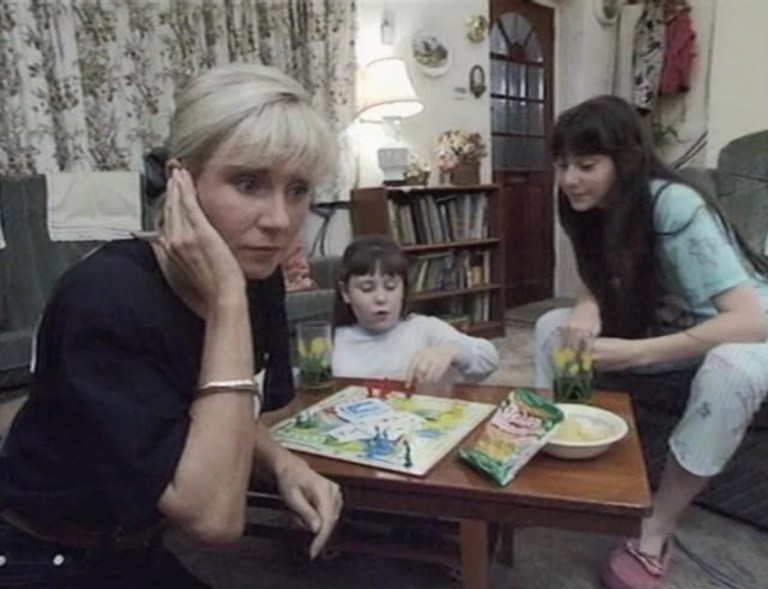
Directed by Lesley Manning, Ghostwatch is a British television horror movie that aired on BBC1 on Halloween night in 1992. Presented in a mockumentary format, Ghostwatch billed itself as a news program intent on airing concrete evidence of the supernatural. It included a “live” investigation into a home where a mother and her daughters complained of poltergeist activity. As the night goes on, the atmosphere shifts from a cheesy Halloween news special to a frightening fever pitch as interviews with other locals added more depth to the family’s claim of a haunting. The film sparked rage among Brits who thought it was a real news program and applause from viewers who recognized the joke.
Organ (1996)
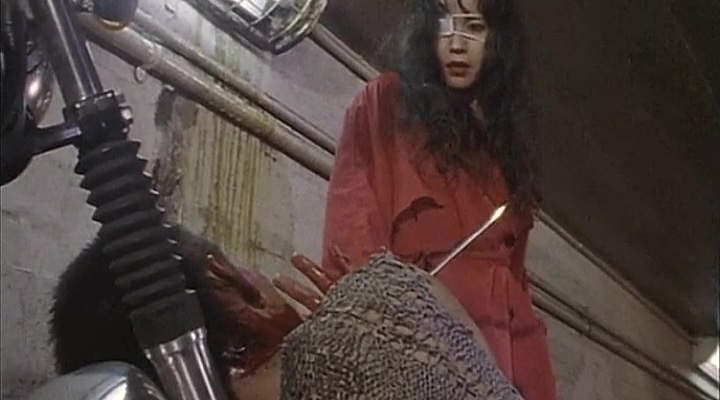
Japanese filmmaker Kei Fujiwara directed and starred in this film adapted from a play her experimental theater company produced. She had previously worked on production of the influential Tetsuo: The Iron Man (1989). In Organ, Fujiwara plays the one-eyed sister of a high school teacher who leads a gang of depraved organ thieves. This film has been described as “impossible to watch” and sees two detectives finding the den where organs have been harvested from live victims.
Eve’s Bayou (1997)
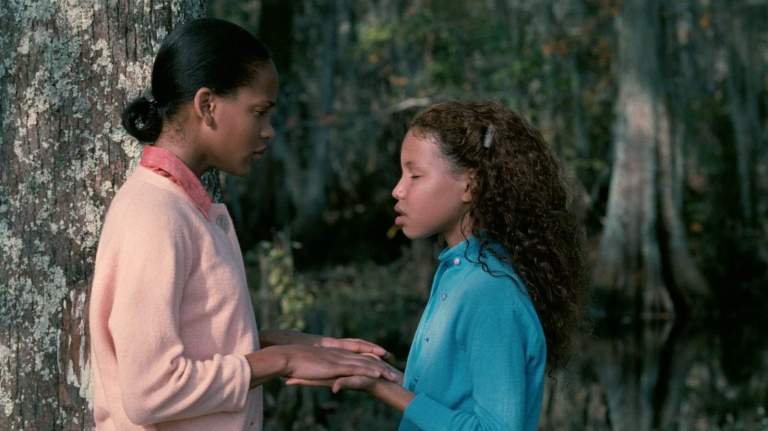
Kasi Lemmons directed this Southern Gothic horror drama about the Batiste family living in rural Louisiana. Haunted by secrets, young Eve (Jurnee Smollett) spends time with her Hoodoo Practitioner auntie (Debbi Morgan) and develops her own gift of Sight. The film has earned many accolades through the years, including a spot on Time‘s 25 Most Important Films on Race list.
Office Killer (1997)
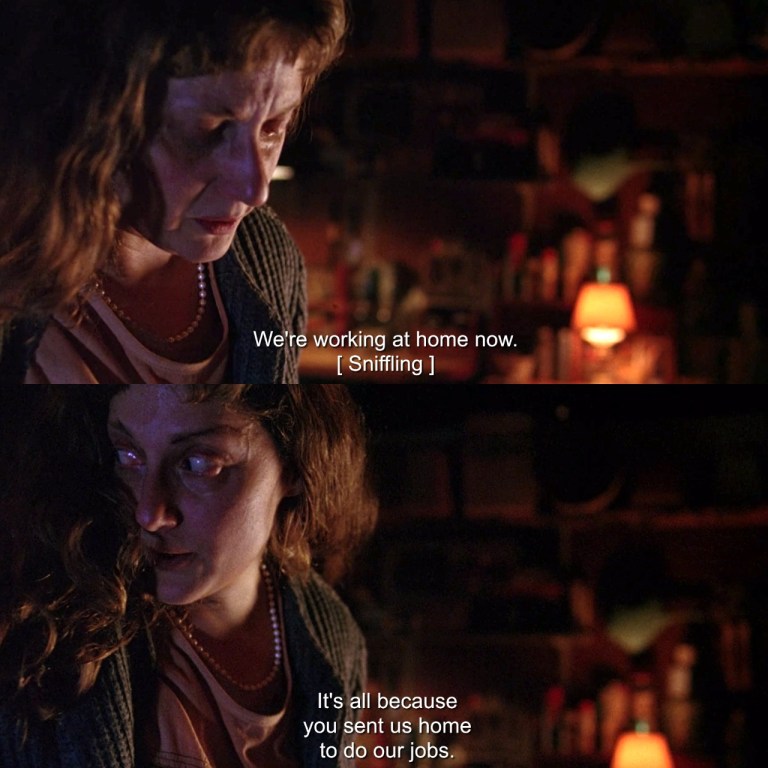
Office Killer is a horror comedy directed by artist Cindy Sherman about a magazine editor, Dorine (Carol Kane) who is forced to work from home because of budget cuts. Lonely, Dorine murders her coworkers and keeps the bodies in her basement office for company. Rarely mentioned in conversations about Sherman or her body of artistic work because of the “low” status of horror movies as a form of creative expression, Office Killer is about the loss of intimacy as technology replaces many of our face to face interactions.
If you want to understand America in the 1990s and the impact that technology had on the workplace during the early days of email, you need to watch this movie.
Dahlia Schweitzer, Why Office Killer Matters
New Horror Movies Directed By Women
American Psycho (2000)
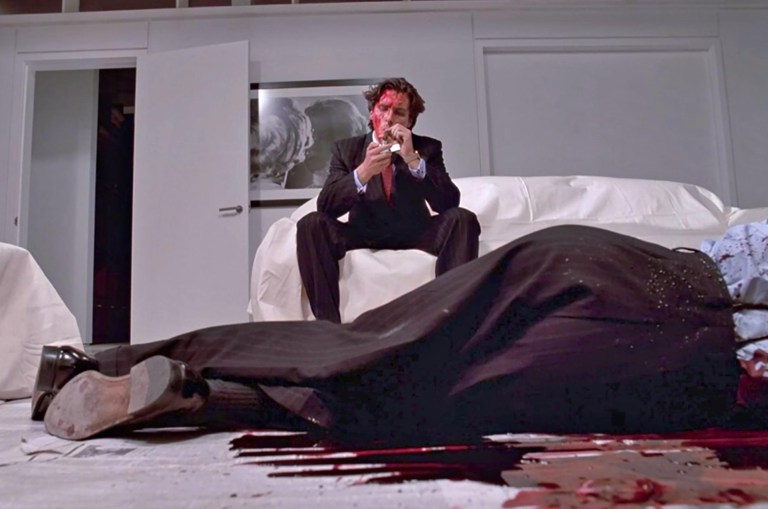
Mary Harron directed this psychological horror movie that satirizes toxic masculinity. She also co-wrote the screenplay with Guinevere Turner. At the time it was made, American Psycho was a widely discussed adaptation of the controversially violent Bret Easton Ellis novel. Production was protested by the National Organization of Women and the Feminist Majority Foundation though Harron’s film removes a lot of the sexualization of women and (if you can believe it) violent scenes from the novel.
I don’t approach movies with an ideology, with a message. I think I approach them with a perspective. I want to tell stories from a female point of view. That doesn’t mean I’m trying to teach a lesson, or that I have a line that I am trying to push, because I’m interested in contradiction, I’m interested in questions that I can’t answer, that are hard to answer.
Mary Harron, Murders and Adaptations
Ginger Snaps (2000)
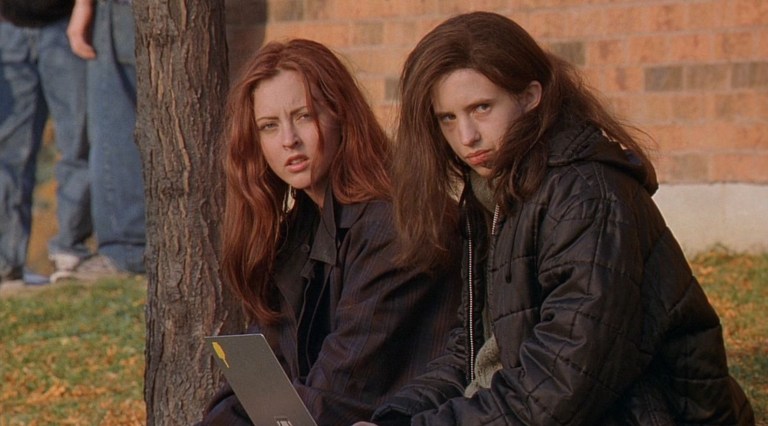
This Canadian horror comedy was directed by a man, John Fawcett, who co-wrote the script with Karen Walton. The film centers on two morbid teenage sisters living in suburbia. When one of the sisters gets her first period, she is also bitten by a werewolf and begins a violent transformation.
The reason Ginger Snaps deserves inclusion on this list is part of a larger argument in feminist film theory that filmmaking is a collaborative creative process and authorship should not be attributed to just the film’s director. When only the kind of people who have the access and support to become a director are remembered in the film industry, we will further erase women’s (usually below the line) contributions. Diving deeper into a film’s production history ensures we have a more accurate and diverse understanding of its authorship and point of view(s).
The 1950s and 1960s auteurism in France and the United States — according to which a film director is an individual agent who controls the entire creation process of the film — especially erased the contributions of the women who, due to a number of historical, economic, and cultural circumstances have had greater access to the positions of screenwriter, editor, actress, and costume designer than that of director.
Katarzyna Paszkiewicz, Gender, Genre, and Authorship in Ginger Snaps
Trouble Every Day (2001)

Claire Denis co-wrote and directed this erotic horror movie that falls into the New French Extremity movement of transgressive French horror. Denis’ sex scenes are starkly distinct from the norm. Rather than objectifying the actors’ bodies and presenting something obviously fictional and idealized, she allows the camera to linger on imperfections like zits and body hair. Denis’ close-ups of human skin render the viewer unable to determine if they are gazing at a man or a woman. In Trouble Every Day, desire is communicated through both loving touch and a violent inability to stop consuming your partner.
Coré’s and Shane’s mirrored scenes both begin in ways that feel carnal and romantic. However, Denis uses the language of the horror film to blur the boundaries of desire. As she remarks, ‘It’s actually a love story. It’s about desire and how close the kiss is to the bite.’ Denis does not represent female desire in an idealized way but instead plays on societal fears about sexuality, creating a slippage between eroticism and agony.
Maddi McGillvray, The Feminist Art Horror of the New French Extremity
In My Skin (2002)
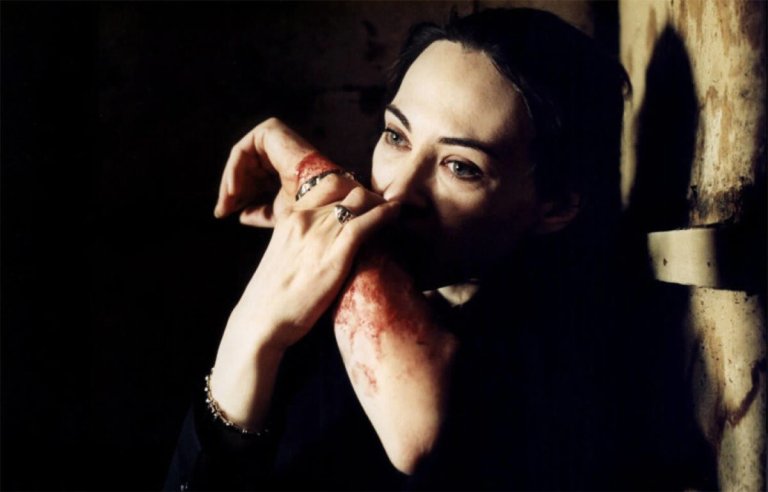
Also known by its French title, Dans Ma Peau, In My Skin is a New French Extremity film written and directed by Marina de Van, who also stars. de Van portrays a woman, Esther, with a successful career and committed boyfriend who accidentally cuts her leg at a party but does not notice right away. Afterwards, Esther becomes fascinated by her body and explores it through self-injury. The film has been screened at the Museum of Modern Art in New York City as a selection for its Messaging the Monstrous: Body Horror series.
The Uninvited (2003)
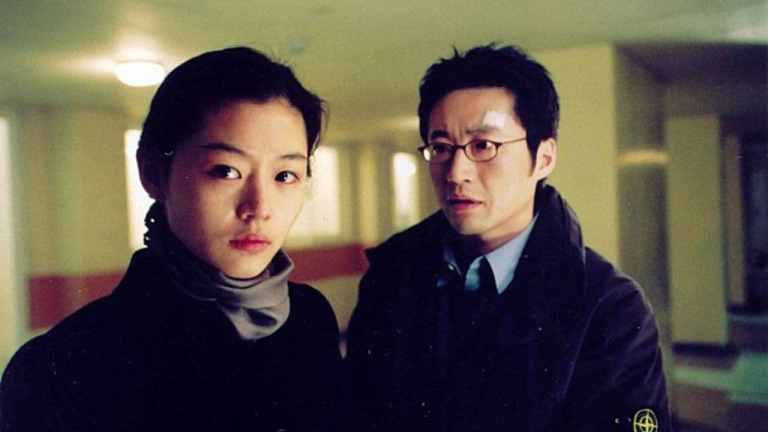
The Uninvited is a South Korean psychological horror film that was Lee Soo-yeon’s directorial debut. The story revolves around Jung-won, an engaged interior designer who has a chance encounter with two murdered women on a train and begins seeing their ghosts at his dining room table. The idea for the film came from the real murders of two children (her daughter, and a neighbor’s child) by a woman in Bucheon in 1996 who dropped the children from the top floor of an apartment building. Soo-yeon has said she wanted to portray the parts of motherhood that aren’t talked about.
Lee Soo-yeon herself has claimed that motherhood is overly idealized in and outside of cinema. She argues, ‘Motherhood that has been fantasized and sanctified is like a ‘bridle’ to women. People conceptualize motherhood with selflessness at the same level as that of a god. When you are a mother, you are not a human, you need to be a god. Through my film, I wanted people to perceive motherhood in terms of what it really means for women.’
Molly Kim, Women-Made Horror in Korean Cinema
Jennifer’s Body (2009)
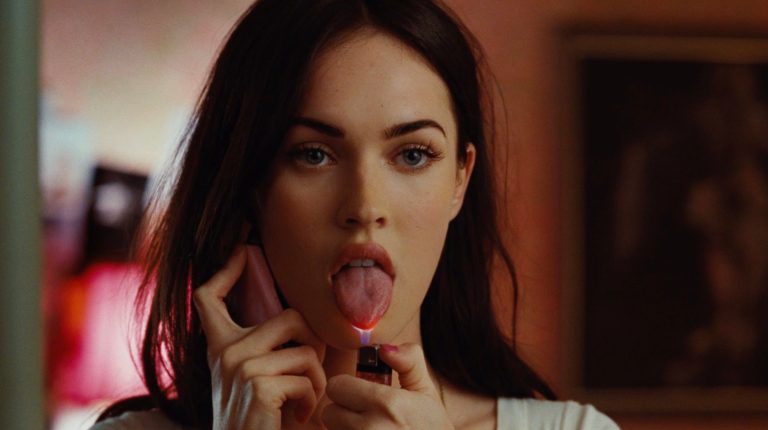
Directed by Karyn Kusama and written by Diablo Cody, Jennifer’s Body is a feminist comedy horror movie about two high school students in rural Minnesota. One night at a local bar, Jennifer (Megan Fox) leaves with a musician (Adam Brody) against the advice of her best friend Needy (Amanda Seyfried). After a botched virgin sacrifice (Jennifer isn’t even a backdoor virgin) Jennifer becomes a succubus who feeds on boys.
Notably, the film’s success was delayed by the studio’s insistence on catering to men in its marketing campaigns rather than presenting the film as the feminist cult classic it was. The studio even suggested to Kusama that they ask star Megan Fox to promote the film on an amateur porn site. When Kusama and Cody pushed back, the response from the studio said verbatim: “Jennifer sexy, she steal your boyfriend.”
(Director) Karyn Kusama and I are both outspoken feminists… We wanted to subvert the classic horror model of women being terrorized. I want to write roles that service women. I want to tell stories from a female perspective. I want to create good parts for actresses where they’re not just accessories to men
Diablo Cody, Cody exorcises demons from “Jennifer’s Body”
The Moth Diaries (2011)

Directed by Mary Harron and based on the gothic novel by Rachel Klein, The Moth Diaries follows Rebecca Cantor (Sarah Bolger) as she returns to her all girls boarding school. Rebecca keeps a journal, studies poetry (her deceased father’s profession) and hangs out with her best friend Lucy. However, the strange new student Ernessa (Lily Cole) drives a wedge between Rebecca and Lucy at the same time that Lucy begins to appear frail and sickly.
I have always been intrigued by the journals that girls keep. They are like dollhouses. Once you look inside them, the rest of the world seems very far away, even unbelievable.
Rachel Klein, The Moth Diaries
American Mary (2012)

American Mary is a Canadian body horror movie directed by Jen and Sylvia Soska. It is about a promising medical student, Mary Mason (Katharine Isabelle), plagued with debt who turns to the extreme body modification community for income. Later, Mary quits her surgical residency after she is raped by a former professor at a party. She takes advantage of her new criminal friends and has them kidnap the professor so she can use him as surgical “practice”.
Mary’s story reflects the struggle for women to attain full agency over their bodies and their lives. That she finds socially unacceptable ways to gain this control—be it stripping or performing illegal surgery or enacting bloody vengeance on her rapist—says more about how the world perceives and treats women than it does about Mary’s choices or her mental health.
Michael Campochiaro, ‘American Mary’, Subjugation, and Female Rage
Kiss Of The Damned (2012)

Alexandra “Xan” Cassavetes wrote and directed this erotic horror movie about a screenwriter, Paulo (Milo Ventimiglia), falls for a vampire named Djuna (Josephine de La Baume) he meets at the video store. Undeterred when he learns her secret, Djuna bites Paulo during sex and he is transformed into a vampire. Conflict arises when Djuna’s out-of-control sister shows up.
Carrie (2013)
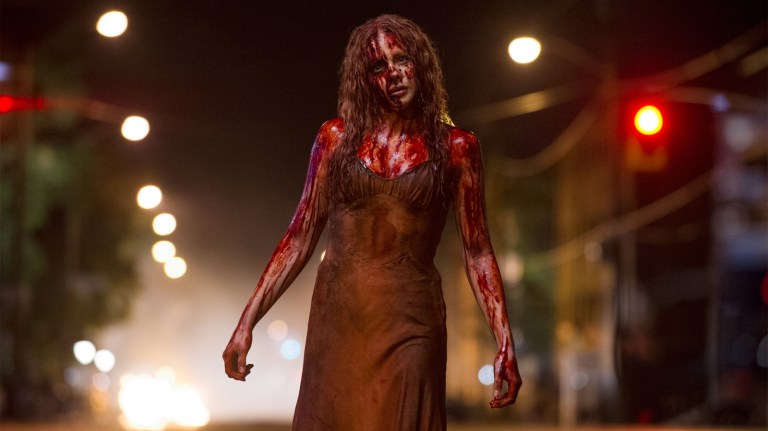
A rare remake that lives up to the original (a very high bar, in this case), 2013’s Carrie is actually the third remake of Brian De Palma’s 1976 Stephen King adaptation and was directed by Kimberly Peirce. Peirce previously directed the biographical drama Boys Don’t Cry (1999), for which Hilary Swank won the Academy Award for Best Actress. She had De Palma’s blessing to put her unique spin on his iconic 70s horror movie and King’s novel.
This version of Carrie has better special effects than the original, less nudity (as star Chloë Grace Moretz was underage) and is more faithful to King’s novel. Updated for the digital age, Carrie White becomes a victim of cyber bullying when her first period freakout is recorded and uploaded to YouTube by school bully Chris Hargensen (Portia Doubleday). Further traumatized by her abusive religious zealot mother (Julianne Moore), Carrie discovers telekinetic powers and unleashes them on her classmates at prom.
Soulmate (2013)
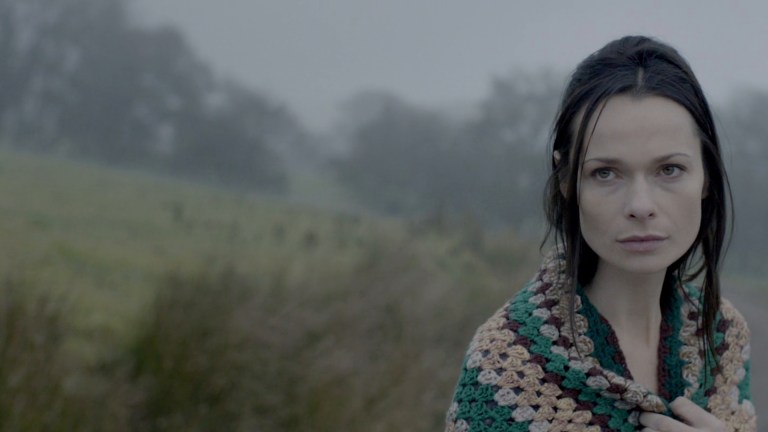
This Belgian mystery horror film was written and directed by Axelle Carolyn in her feature debut. Soulmate sees Audrey (Anna Walton) staying at a remote Welsh cottage to recover from a suicide attempt and the recent loss of her husband. She learns from locals that the cottage’s previous resident, Douglas, died by suicide 30 years ago. Audrey soon begins hearing strange noises and suspects Douglas is haunting the home.
Carolyn was asked to remove an opening scene showing Audrey’s suicide attempt by the British Board of Film Classification (BBFC). Media critics pointed out that this scene in which a woman injures herself was markedly less violent than scenes depicting men injuring women in Hostel (2005) and Irréversible (2002), which the BBFC did not seek to censor.
A Girl Walks Home Alone At Night (2014)
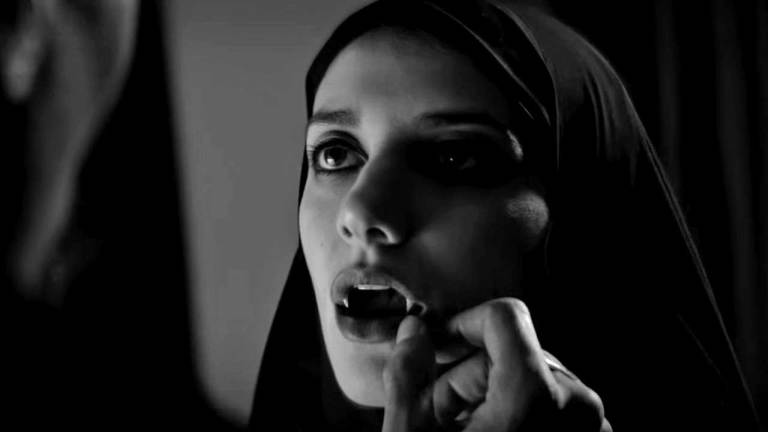
Ana Lily Amirpour wrote and directed this film which she calls “the first Iranian vampire spaghetti western”. Filmed in black and white in a noir style, A Girl Walks Home Alone At Night is about a lonely vampire (Sheila Vand) who is credited only as “The Girl”. She wears a chador and seduces men in order to kill them. She also skateboards, listens to music in her apartment and forms an unlikely friendship with a young man named Arash (Arash Manesh).
Honeymoon (2014)
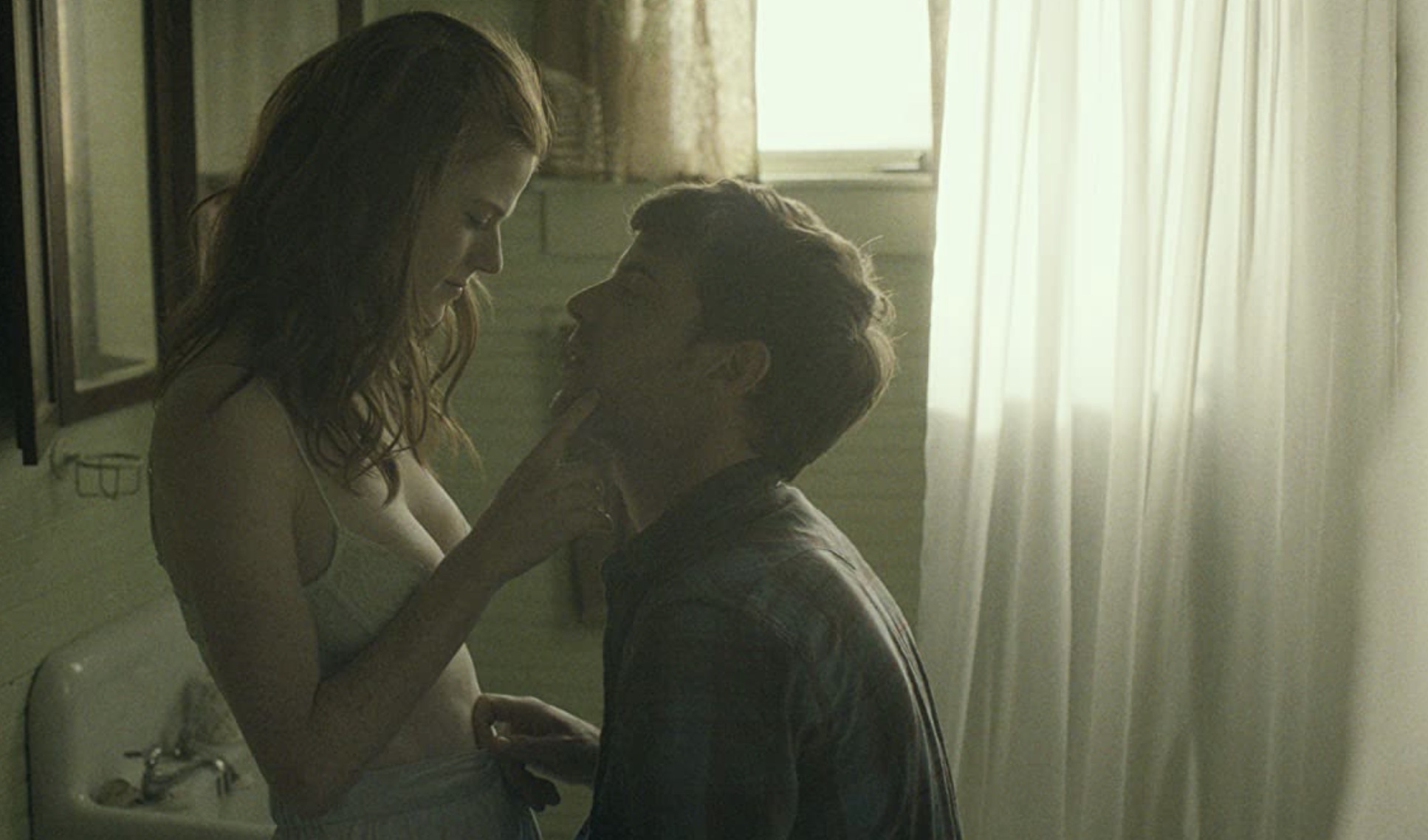
Co-written and directed by Leigh Janiak, Honeymoon is about newlyweds Bea (Rose Leslie) and Paul (Harry Treadaway) who spend their honeymoon at Bea’s family cabin. The first night, Harry wakes to discover Bea is missing. When he finds her, she claims she was sleepwalking. As the trip progresses, Bea’s behavior becomes increasingly strange.
Goodnight Mommy (2015)
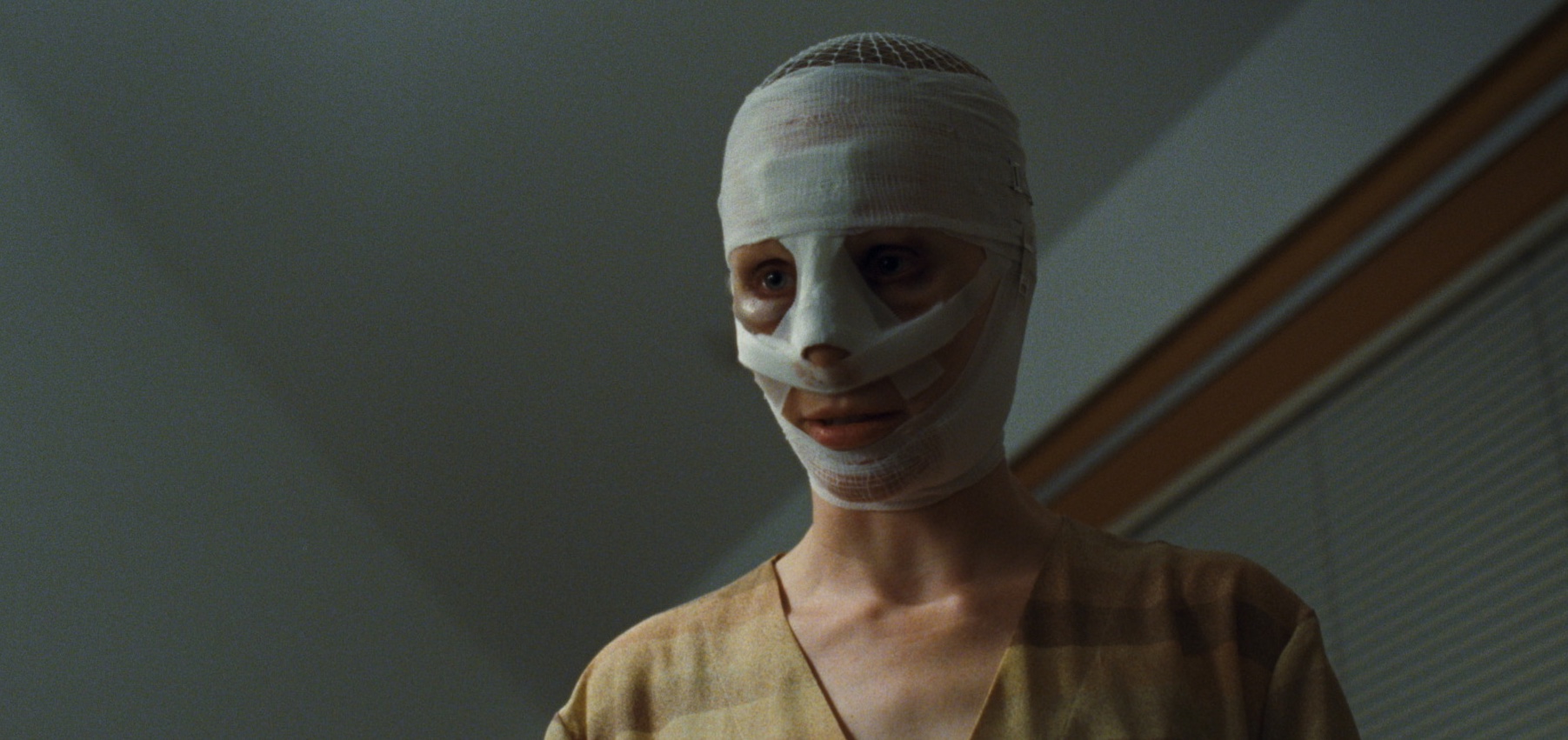
Veronika Franz and her partner’s nephew, Severin Fiala, are a filmmaking duo who wrote and directed Goodnight Mommy as well as The Lodge (2019). Goodnight Mommy is a pastoral horror movie about two twin boys and their mother. When the mom returns home from getting plastic surgery, her bandages render her unrecognizable. With their relationship already distant, the boys begin to believe she is an imposter.
Goodnight Mommy was remade in English by director Matt Sobel with Naomi Watts as the mother and Cameron and Nicholas Crovetti as the twins, however it does not approach the quality of the Austrian original.
The Lure (2015)
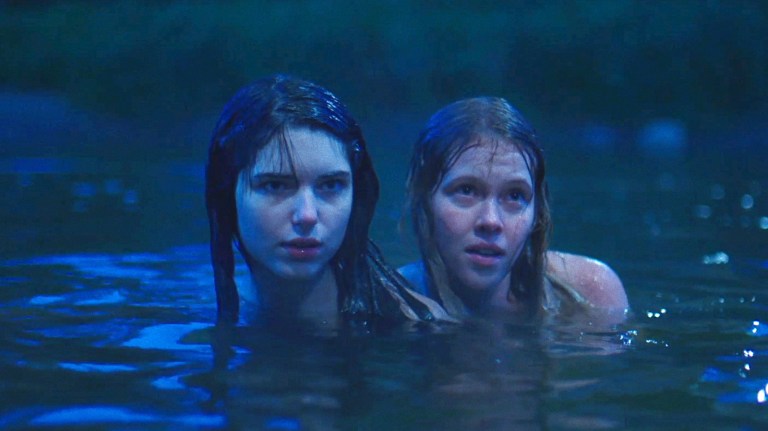
A Polish musical horror film directed by Agnieszka Smoczyńska in her directorial debut. The Lure is a horror retelling of the 1837 fairytale The Little Mermaid. It follows two sirens who perform as strippers and singers in a nightclub. When one of the sirens falls for a local boy, she is warned that trading her tail for legs will result in her losing her voice.
The Invitation (2015)
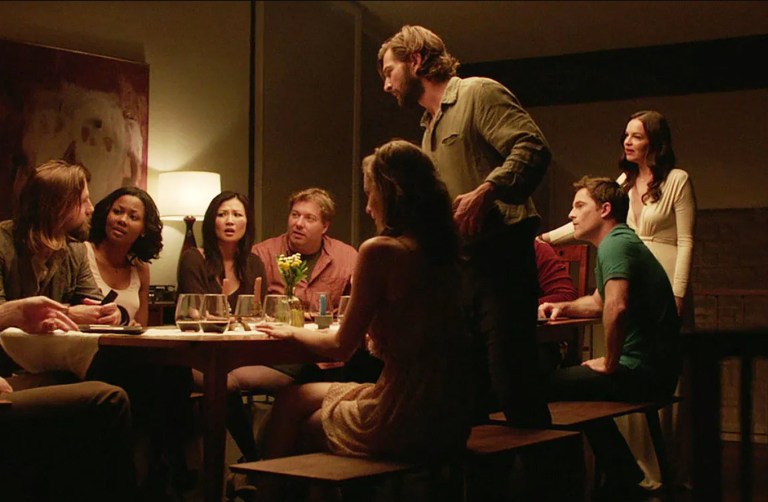
After Jennifer’s Body (2009), Karyn Kusama directed this creepy cult horror movie about a couple attending a Hollywood Hills dinner party with the man’s estranged ex-wife. Already unsure about the invitation, the couple learns the other dinner party guests are as curious about the purpose of the dinner as they are. When the hosts finally reveal their motivation, the night collapses into a violent fight for survival.
Raw (2016)
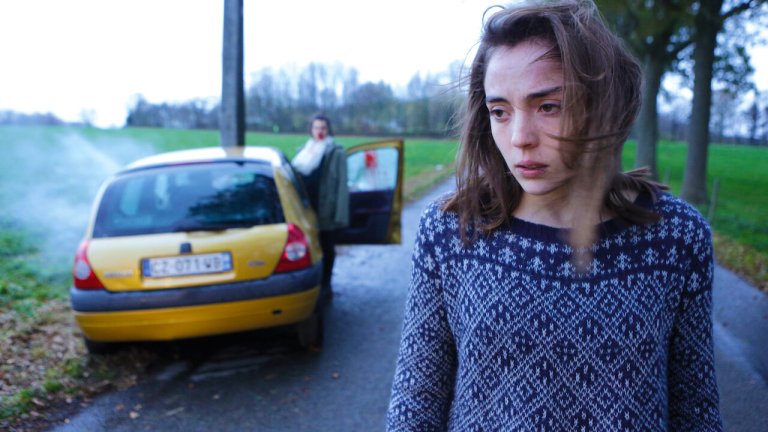
Julia Ducournau wrote and directed this horror movie about a new veterinary student, Justine (Garance Marillier), who discovers a cannibalistic urge after tasting meat for the first time. While her sister (Ella Rumpf) tries to show her the ropes of cannibalism, Justine still feels alone in navigating her new carnal desire, which comingles with the growing lust she feels for her roommate Adrien (Rabah Naït Oufella). Raw was met with near universal critical acclaim.
The Love Witch (2016)
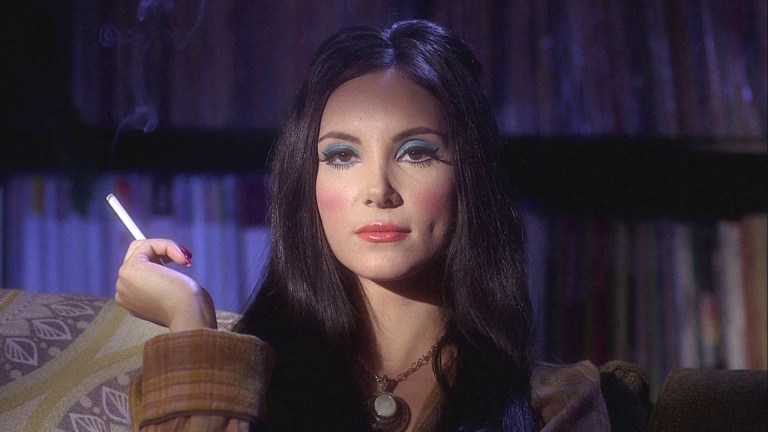
A comedy horror movie written, edited, directed, produced and scored by feminist filmmaker Anna Biller. The Love Witch stars Samantha Robinson as Elaine Parks, a young and beautiful witch who relocates to Arcata, California after her husband dies. Obsessed with love and finding the perfect partner, the bodies pile up as Elaine’s clingy suitors all end up dead.
New York Times critic A.O. Scott said that he would have included The Love Witch in that year’s nominations for the Academy Award for Best Original Screenplay.
Revenge (2017)
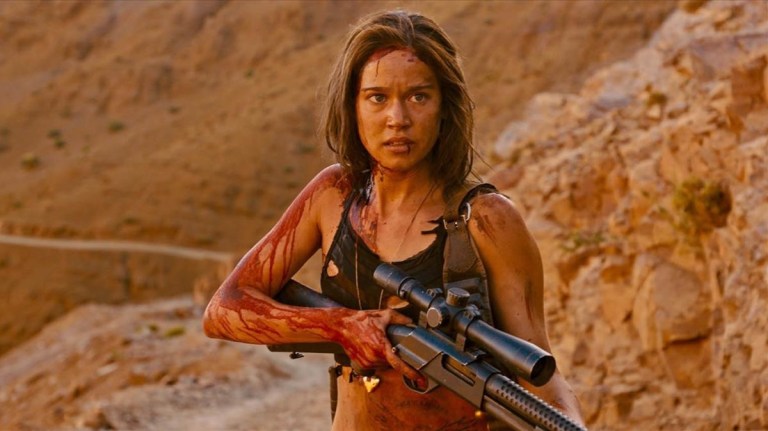
A French action horror movie written and directed by Coralie Fargeat about a young woman, Jen (Matilda Lutz), who accompanies her wealthy (married) boyfriend, Richard (Kevin Janssens), to his luxury home in the desert. When Richard’s friends arrive early for a hunting trip, one of them rapes Jen. She runs into the desert where she is eventually pushed off a cliff by Richard and impaled on a tree during the fall. Miraculously, Jen survives. She takes peyote and begins hunting the men down in a powerful and violent third act.
I didn’t want Jen to be screaming and suffering for the whole movie, trying to survive. I wanted her to go somewhere else and transform into a cool and badass character.
Coralie Fargeat, ‘Revenge’ director Coralie Fargeat on her gory riposte to the male gaze
The Nightingale (2018)
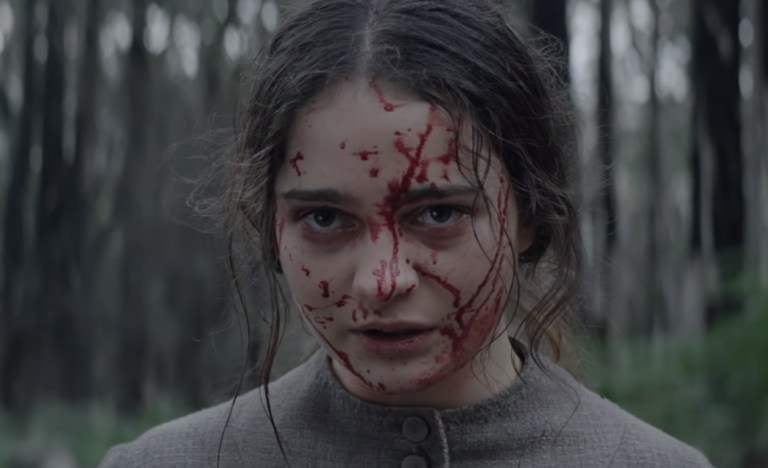
Jennifer Kent wrote and directed this psychological thriller horror movie about a 19th century woman out for revenge against the soldiers who raped her and killed her family. She teams up with a likeminded Aboriginal tracker and the two hunt through the Tasmanian wilderness. The Nightingale is the first film ever to include palawa kani, a reconstructed version of an Aboriginal Tasmanian language.
The Other Lamb (2019)
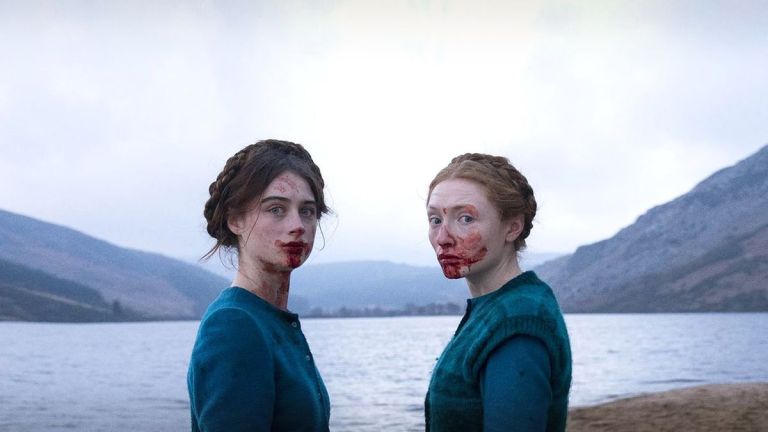
Directed by Małgorzata Szumowska and written by Catherine Smyth-McMullen, The Other Lamb is a horror film about a young girl (Raffey Cassidy) who is trapped in a polygynist cult. As she comes of age, she will transition from a “Sister” into a “Wife” and be forced to have sex with the cult’s leader (Michiel Huisman).
Lucky (2020)
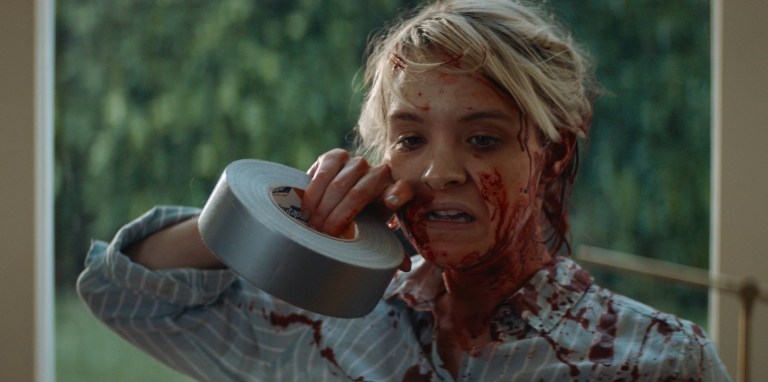
Written by Brea Grant (who also stars) and directed by Natasha Kermani, Lucky follows successful self-help author May who experiences a bizarre home invasion one night with her husband. Her husband acts as if the crime is completely normal and happens every day, he also refuses to engage with May about the details of this. Sure enough, the next night and the night after that, May experiences more home invasions.
It’s a metaphor for #yesallmen. i.e. there may be only one literal guy attacking her, but the other men share some of the blame for their part in “normalizing” it.
Letterboxd review of ‘Lucky’
Promising Young Woman (2020)
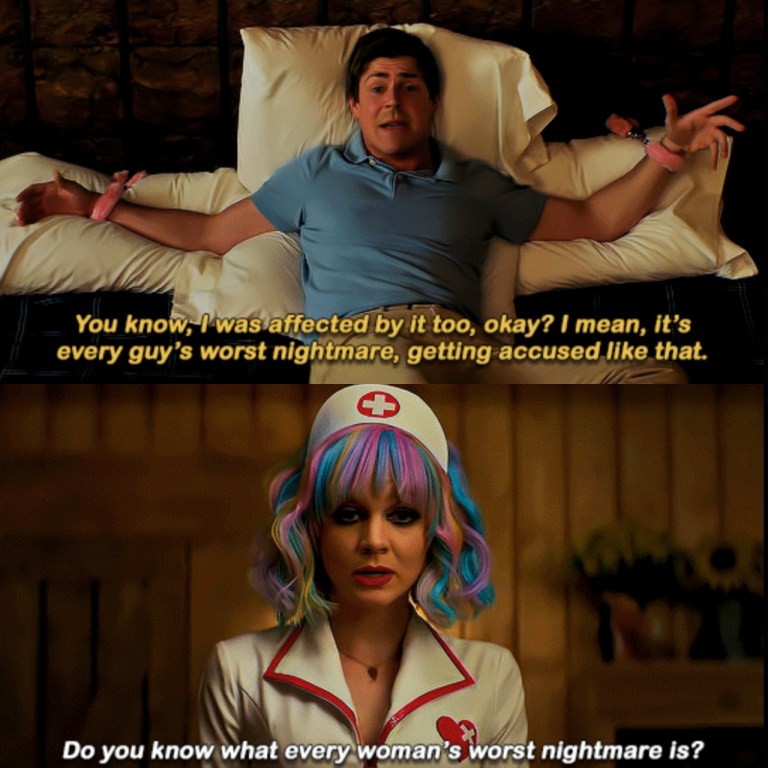
Promising Young Woman is a vigilante thriller written and directed by Emerald Fennell that is a feminist update to the rape-revenge subgenre. Carey Mulligan stars as Cassie, a medical school dropout traumatized by the rape and subsequent death by suicide of her close friend. Cassie gets revenge on men by regularly acting drunk at bars and nightclubs until a predatory man takes her home and attempts to rape her, at which point she soberly confronts them. The title Promising Young Woman is a play on the phrase “promising young man”, often used by defenders of rapists to argue for short (or no) sentencing so that the perpetrator can move on with his life. The injustice being that a similar concern is not extended toward the victim, who is suffering and struggling to move on with her life.
Saint Maud (2020)

Rose Glass wrote and directed this psychological horror movie about a young hospice nurse, Maud (Morfydd Clark), who has recently become a fanatical Catholic. Maud cares for her patient, Amanda (Jennifer Ehle), who is an atheist. When Amanda rebuffs her attempts to save her soul, Maud begins to spiral.
Candyman (2021)

Nia DaCosta’s spiritual sequel to the iconic 1992 horror movie was her second film to direct, she also co-wrote the script with Jordan Peele and Win Rosenfeld. Chicago artist Anthony McCoy (Yahya Abdul-Mateen II) creates a gallery show inspired by the urban legend of Candyman. The attention revives Candyman and bodies pile up in the now-gentrified Cabrini-Green neighborhood.
The Fear Street Trilogy (2021)
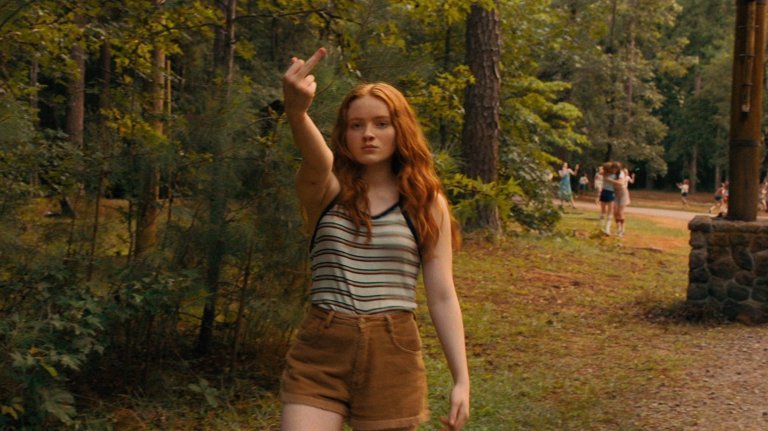
Leigh Janiak directed this trilogy of films for Netflix based on the iconic teen books by R.L. Stine. Released in consecutive weeks, the trilogy follows a group of teens as they seek to break a centuries long curse on the town of Shadyside. Each film takes place mostly in a distinct time period and the story is shaped by popular films depicting or produced in that time: Fear Street Part One: 1994 is modeled after Scream (1996), Fear Street Part Two: 1978 is modeled after Friday the 13th (1980) and Fear Street Part Three: 1666 is influenced by The New World (2005).
Medusa (2021)
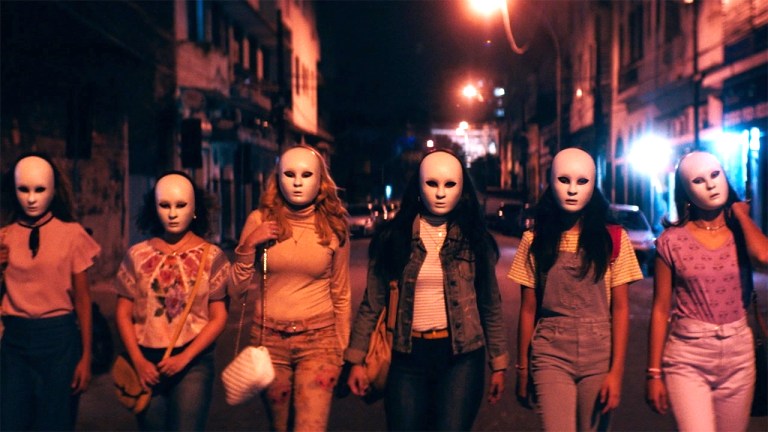
Directed by Anita Rocha da Silveira, this Brazilian horror movie sees a group of devout teen girls become vigilantes in their city, beating up sinners and unbelievers. Medusa pokes fun at evangelical culture in a similar way to Saved! (2004), but also includes horror elements. Creepy, funny and aesthetically beautiful, Medusa is one of the most underrated and under seen horror movies.
Titane (2021)
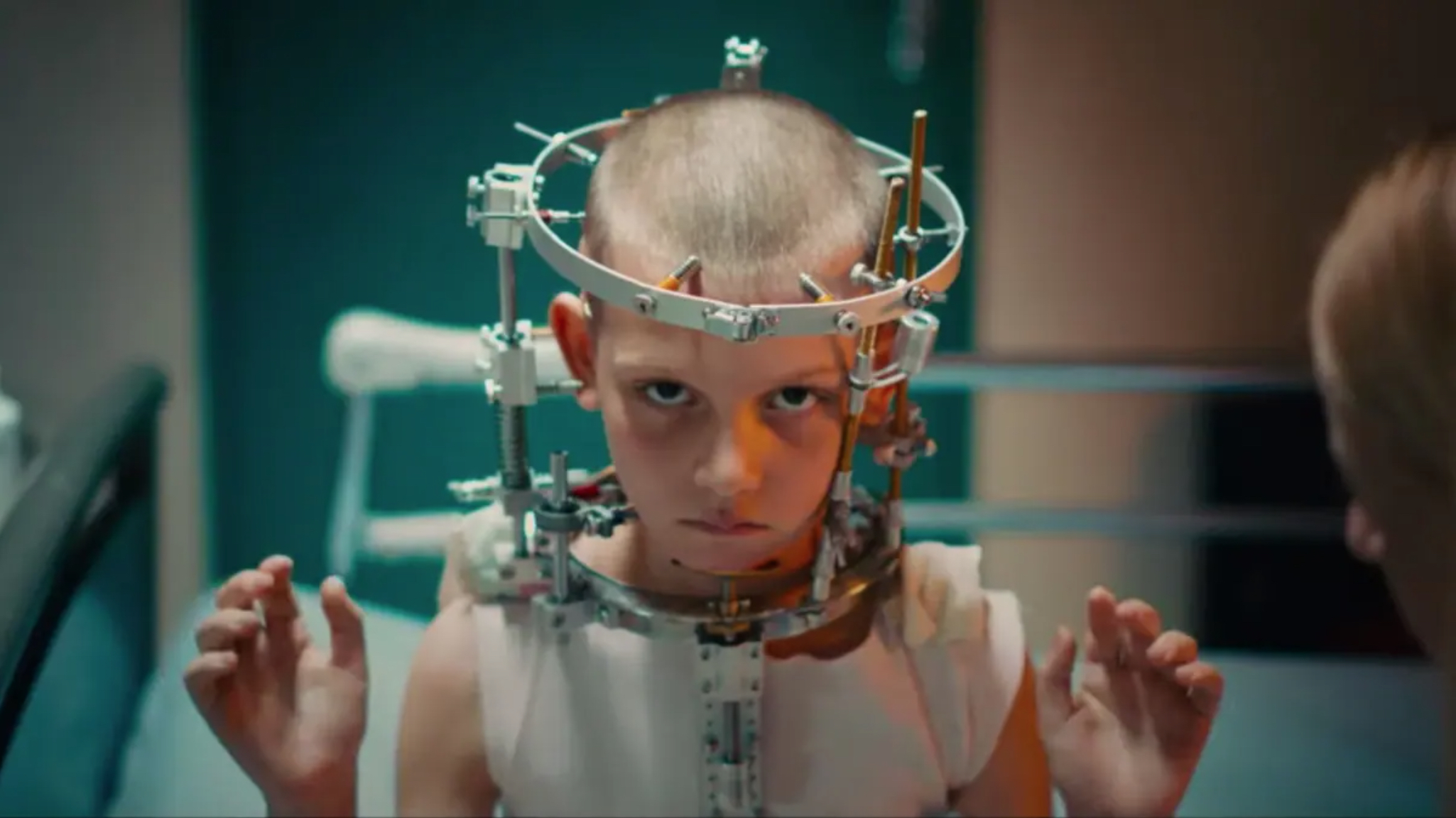
Julia Ducournau’s follow up to Raw (Garance Marillier makes an appearance as Justine) is a body horror about a girl, Alexia, who has a titanium plate put in her head following a childhood car accident. As an adult, Alexia is a car model by day and a serial killer by night. When one of her kills goes wrong, she literally burns down her old life and starts anew as “Adrien”. Titane won the Palme d’Or at the 2021 Cannes Film Festival. Ducournau is the second woman to win the Palme d’Or after Jane Campion for The Piano (1993).
Bodies Bodies Bodies (2022)
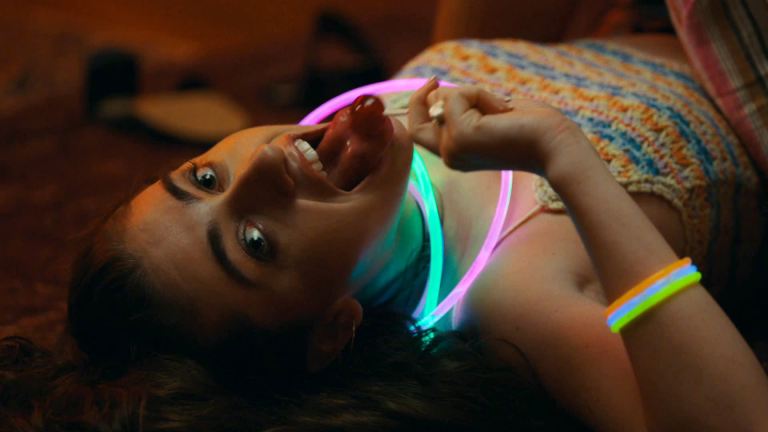
Halina Reijn directed this comedy horror movie that is a Generation Z version of a whodunit slasher. A working class woman accompanies her girlfriend to a gathering of wealthy 20-somethings during a hurricane. After playing a party game about murder, the friends start dropping dead.
Fresh (2022)

A horror movie written by Lauryn Kahn and directed by Mimi Cave. Fresh sees a young woman named Noa (Daisy Edgar-Jones) experiencing the misogyny-filled horror of heterosexual dating. When she meets Steve (Sebastian Stan) at the grocery store, she thinks she has finally met one of the good ones. The twist comes 30 minutes into the film, at which point the opening credits finally appear.
Fresh works as an allegory for how women are often objectified and viewed as meat to be consumed or a product to be sold by men. When one woman, Ann (Charlotte Le Bon), is revealed to be enforcing patriarchy (via her marriage to Steve, and complicity in his crimes), a subsequent scene shows her undressing in order to highlight what proximity to (patriarchal) men has cost her (her literal leg), even while she enjoys a privileged position within that system. Later, Jojo T. Gibbs’ character, Mollie, screams at her “Bitches like you are the f-cking problem.”
Master (2022)
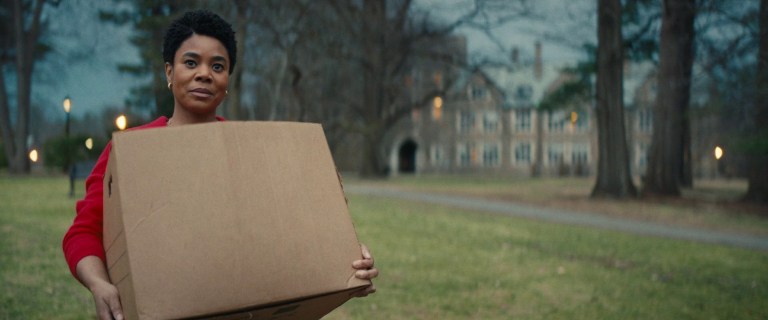
Mariama Diallo wrote and directed this psychological drama horror movie about a black woman, Gail Bishop (Regina Hall), who becomes the first black “master” (head of a college) at an elite New England university. Meanwhile a black student, Jasmine Moore (Zoe Renee) moves into a dorm room that is believed to be haunted by the school’s first black student, who died by suicide in the room. (Spoilers ahead) Jasmine’s classmates bully and humiliate her until she also dies by suicide. At the film’s climax, Gail helplessly breaks down as she explains that proving racism or bullying or abuse is like trying to prove that a ghost exists. Even when you can see it and even when it has very real effects (like causing people to die by suicide), it is still impossible to convince skeptics it exists.
Nanny (2022)
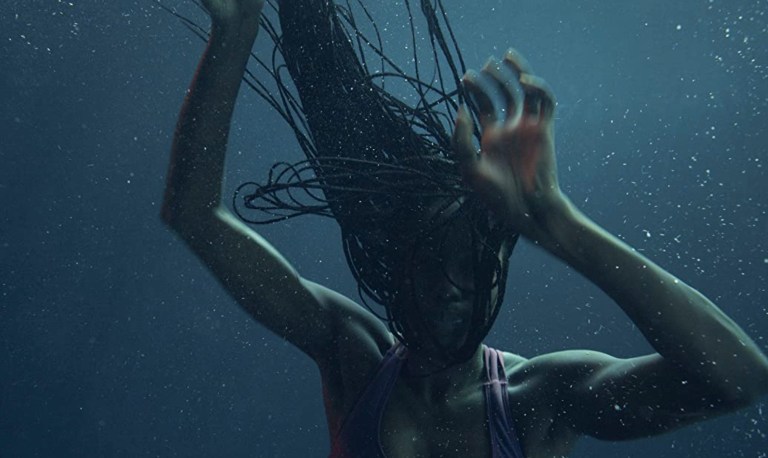
Nikyatu Jusu directed this horror drama about an undocumented immigrant, Aisha (Anna Diop), who left her son in Senegal to make money as a nanny for a wealthy Manhattan family. Her thoughts are consumed with her hopes to bring her son and cousin to the U.S. when she earns enough money. Nanny won the Grand Jury Prize at the Sundance Film Festival. It was the first horror movie to win the honor and Jusu is the first black woman to win the award in the festival’s 40+ year history.
Watcher (2022)
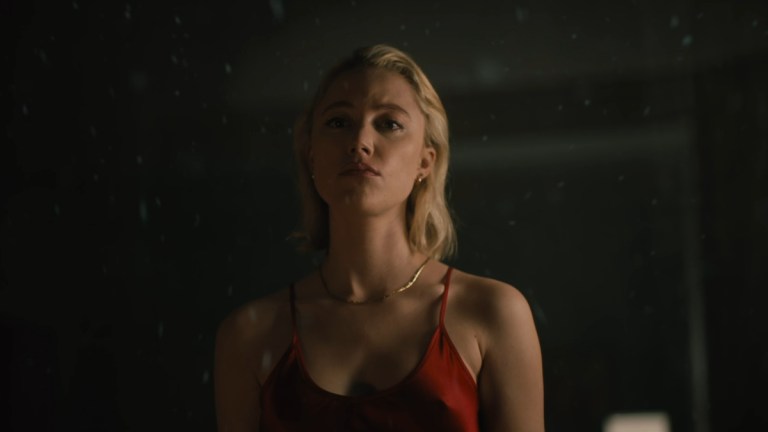
Watcher is a psychological horror movie directed by Chloe Okuno in her feature debut. It follows Julia (Maika Monroe) and Francis (Karl Glusman), an American couple who relocate to Hungary. While Francis is busy working, Julia has little to do in a new city where she doesn’t know the language. She becomes convinced that the couple’s neighbor is a voyeur who may be responsible for a series of local murders.
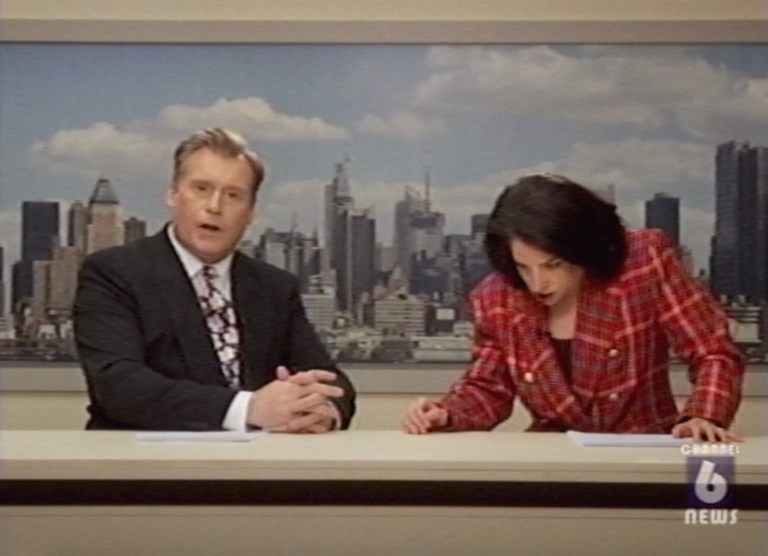
Five Nights at Freddy’s (2023)
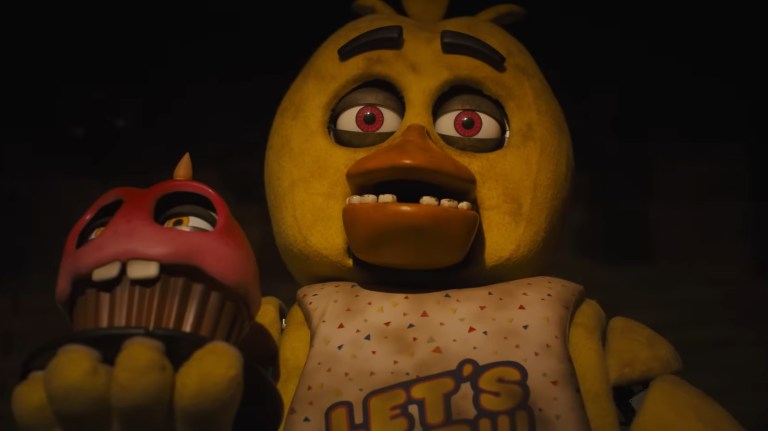
Five Nights at Freddy’s is a horror movie directed by Emma Tammi. It is based on the video game series and follows a night security guard (Josh Hutcherson) who discovers the animatronic performers at the mall where he works are actually possessed by the spirits of murdered children. Five Nights at Freddy’s grossed $296.4 million worldwide against a budget of $20 million and is currently the highest grossing horror movie directed by a woman.
Lisa Frankenstein (2024)

Zelda Williams directed this comedy horror movie written by Diablo Cody (who says it exists in the same universe as Jennifer’s Body). It follows Lisa (Kathryn Newton), a gothic high school girl who prefers making grave rubbings to making friends. When a lightning strike reanimates the Victorian corpse of her favorite grave, the two form an unlikely friendship.
Humanist Vampire Seeking Consenting Suicidal Person (2024)
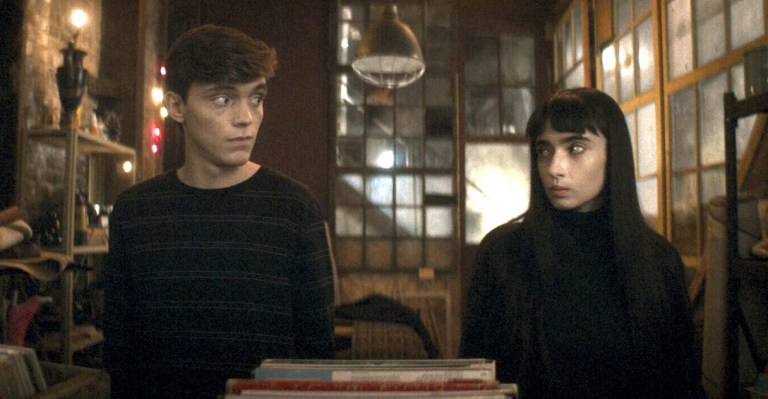
A comedy horror movie co-written and directed by Québécois filmmaker Ariane Louis-Seize. Sasha (Sara Montpetit) is a young vampire who is too sensitive to perform the necessary kills to sate her appetite for blood. When her parents cut her off, Sasha nears starvation before meeting a suicidal young man, Paul (Félix-Antoine Bénard), who may be the answer to her problems. Sasha and Paul set off on a nocturnal adventure to fulfill Paul’s dying wish.
The Devil’s Bath (2024)
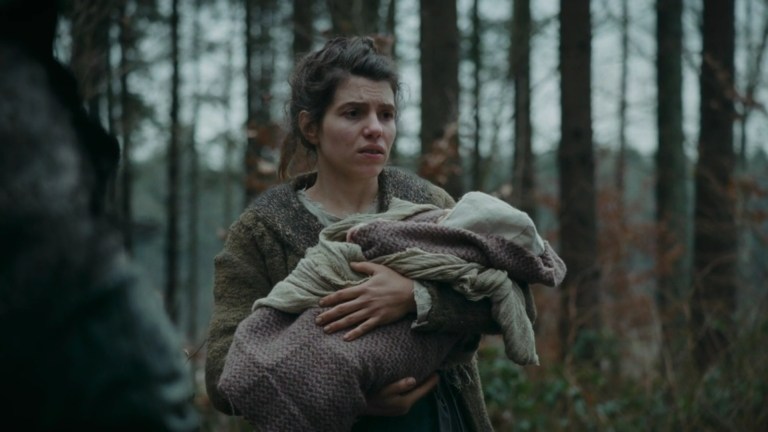
Filmmaking duo (and aunt/nephew) Veronika Franz and Severin Fiala wrote and directed this historical horror drama based on research by Kathy Stuart. The film follows a young woman who has trouble adjusting to life in her new husband’s community. The Devil’s Bath is a slow burn but it builds to a devastating finale. It was selected as Austria’s entry for Best International Feature Film at the 2025 Academy Awards.
The Substance (2024)
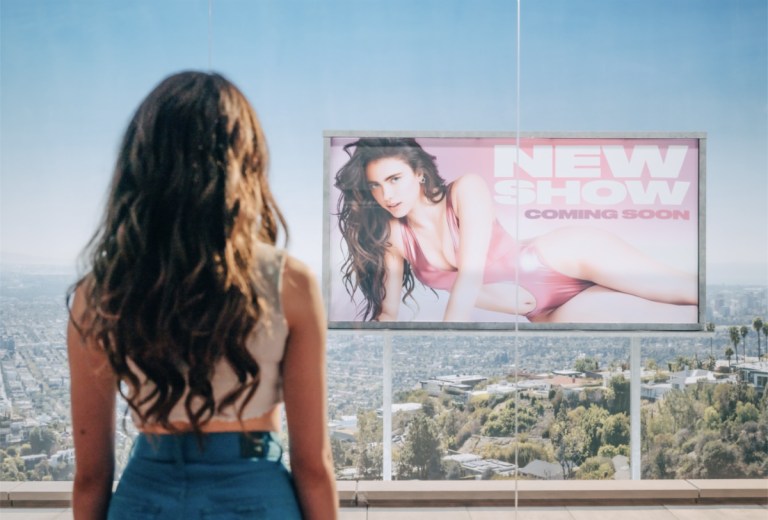
Written and directed by Coralie Fargeat, The Substance is a body horror movie about an aging star, Elisabeth Sparkle (Demi Moore), who goes to extreme lengths to recapture her youth. Sparkle seeks out a black market drug called “The Substance” which creates a young, externally perfect alternate named Sue (Margaret Qualley), though the two remain “one”. The two forms must rotate seven days on and seven days off and pay the consequences for the actions of the other.
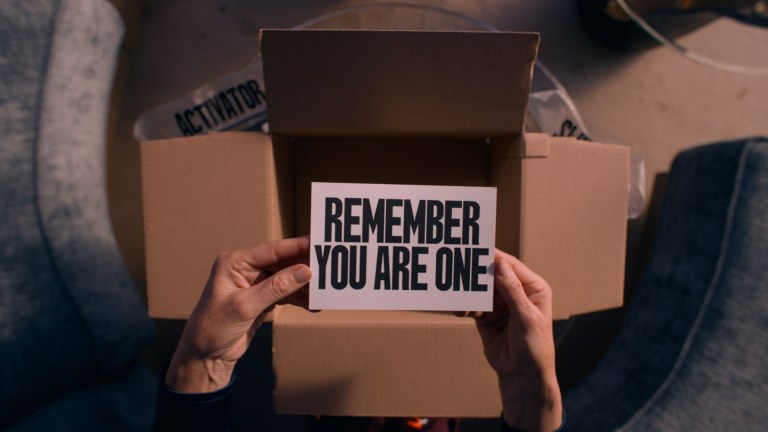
On the surface the film is a dark fairy tale about the extreme importance our culture places on adhering to beauty standards (especially for women, as Dennis Quaid’s character makes clear). The Substance also works as an allegory for addiction. Elisabeth’s life is split into two parts: her real self and “Sue”. The more time spent as Sue, the more Elisabeth’s real body deteriorates, which makes her even more dependent on Sue and reluctant to quit The Substance. At first, the escape Sue provides seems like everything Elisabeth wants but in the end, it turns her into a monster.
For The Substance, Coralie Fargeat was nominated for an Academy Award for Best Director. This is just the 10th time in the Academy’s near 100-year history that a woman has been nominated for this award. The Substance received five Oscar nominations in total: Best Director, Best Picture, Best Original Screenplay, Best Actress (Demi Moore) and Best Makeup and Hairstyling. It won the award for Best Makeup and Hairstyling.
Exhaustive List of Horror Movies Directed by Women
In addition to the films discussed above, here are more horror movies directed by women:
- The Other Side of the Underneath (1972) Jane Arden directed this horror movie about a therapist working with a woman with schizophrenia.
- Messiah of Evil (1973) Gloria Katz and Willard Huyck directed this horror movie about a woman searching for her father in a town overrun by a cult.
- Celia (1989) Ann Turner directed this Australian horror movie about a disturbed young girl.
- Ravenous (1999) Antonia Bird directed this cannibal horror movie about the Western frontier.
- In the Cut (2003) Academy Award winner Jane Campion directed this psychological thriller about a teacher’s entanglement with a detective investigating a series of murders.
- The Headless Woman (2008) Lucrecia Martel directed this psychological thriller arthouse film about a woman’s mental breakdown after a car accident, as she is unsure whether she has committed manslaughter.
- Amer (2009) Hélène Cattet and Bruno Forzani directed this French modern giallo about a woman’s erotic desires.
- Red Riding Hood (2011) Catherine Hardwicke directed this romantic horror movie based on the “Little Red Riding Hood” folk story.
- Silent House (2011) Laura Lau with Chris Kentis directed this US remake of a 2010 Uruguayan film that tells the story of a terrorized girl cleaning up her isolated country home with her father and uncle.
- Among Friends (2012) Scream Queen Danielle Harris directed this horror comedy about a dinner party that takes a frightening turn.
- Black Rock (2012) Kate Aselton directed this survival horror movie about three female friends who run afoul of a group of men on a camping trip.
- Chained (2012) Jennifer Lynch (daughter of filmmaker David Lynch) directed this psychological horror movie about a serial killing taxi driver.
- Helter Skelter (2012) Mika Ninagawa directed this horror drama about a pop star obsessed with plastic surgery.
- Vamps (2012) Amy Heckerling reunited with her Clueless star Alicia Silverstone for this comedy horror movie about two female vampires who are best friends. Krysten Ritter co-stars with Silverstone.
- Dark Touch (2013) Marina de Van directed this horror thriller about a powerful young girl.
- Evangeline (2013) Karen Lam directed this horror movie inspired by Canadian serial killer Robert Pickton.
- Nothing Bad Can Happen (2013) Katrin Gebbe directed this Dutch crime horror movie about a teen whose faith and resilience are tested.
- The Strange Color Of Your Body’s Tears (2013) French filmmaking couple Cattet & Forzani present this surreal giallo following a man’s quest to find his missing wife.
- The Babadook (2014) Director Jennifer Kent adapted her own short film into this creepy feature about an exhausted widow who is haunted by a mysterious entity from her son’s pop-up book.
- Blood Punch (2014) Madellaine Paxson directed this horror movie about a dangerous love triangle.
- The Voices (2014) Marjane Satrapi directed this comedy horror movie starring Ryan Reynolds as a schizophrenic man who accidentally begins killing women.
- Prevenge (2016) Alice Lowe directed this British slasher comedy film while she was pregnant. Shot in under two weeks, Lowe also stars as a widow whose fetus leads her on a killing spree.
- Always Shine (2016) Sophia Takal directed this psychological horror movie about two actress friends on a trip to Big Sur where violent jealousy takes over.
- The Bad Batch (2016) Ana Lily Amirpour directed this star-studded horror movie about societal collapse that sees Suki Waterhouse running from a gang of cannibals. Jason Momoa, Keanu Reeves, Jim Carrey and Giovanni Ribisi also star.
- The Beguiled (2017) Sofia Coppola directed this Southern Gothic thriller about the teachers and students of an all girls school in Virginia who take in an injured Union soldier during the Civil War.
- Berlin Syndrome (2017) Cate Shortland directed this nightmare travel horror movie about a woman whose one night stand imprisons her in his apartment.
- Blue My Mind (2017) Lisa Brühlmann directed this drama fantasy horror movie about a teen girl whose body undergoes a transformation.
- Cargo (2017) Yolanda Ramke and Ben Howling directed this post-apocalyptic horror movie about a man searching for safety for his family.
- Good Manners (2017) Juliana Rojas and Marco Dutra directed this horror movie about a woman’s relationship with her new nanny.
- The Institute (2017) Pamela Romanowsky directed her former NYU classmate James Franco in this horror movie about a 19th century woman’s frightening experience in an asylum.
- Most Beautiful Island (2017) Ana Asensio directed this drama horror movie about an undocumented woman in New York City running from a secret in her past.
- The Keeping Hours (2017) Karen Moncrieff directed this drama horror movie about a divorced couple brought back together by supernatural events.
- Radius (2017) Caroline Labrèche and Steeve Léonard directed this horror movie about a man who discovers that anyone who comes within a 50 foot radius of him dies.
- XX (2017) An anthology horror movie with each segment directed by women. Directors: Jovanka Vuckovic, Annie Clark, Roxanne Benjamin, Karyn Kusama and Sofia Carrillo.
- The Wind (2018) Emma Tammi directed this Western horror movie about a couple on the American frontier living in isolation until the arrival of two neighbors.
- High Life (2018) Claire Denis directed Robert Pattinson and Mia Goth in this dystopian space horror movie.
- We Have Always Lived in the Castle (2018) Stacie Passon directed this drama horror movie with Taissa Farmiga and Sebastian Stan based on the Shirley Jackson novel.
- Black Christmas (2019) Sophia Takal directed this feminist reimagining of the original 70s slasher movie.
- Body at Brighton Rock (2019) Roxanne Benjamin wrote, directed and produced this horror thriller about a state park employee who stumbles upon a crime scene alone in the remote wilderness.
- Carmilla (2019) Emily Harris directed this romantic vampire horror movie based on the novel by Sheridan Le Fanu.
- Darlin’ (2019) Pollyanna McIntosh directed this horror movie about a feral girl who is sent to be rehabilitated by nuns.
- The Lodge (2019) Veronika Franz and Severin Fiala followed up Goodnight Mommy with this psychological horror movie about two children and their new stepmother who go to an isolated lake home to celebrate Christmas together.
- Satanic Panic (2019) Chelsea Stardust directed this adaptation of a Grady Hendrix story.
- 12 Hour Shift (2020) Brea Grant directed this horror comedy about a junkie nurse and a black market organ sale.
- Amulet (2020) Romola Garai wrote and directed this British horror movie about a homeless ex-soldier who spends the night with a woman and her dying mother.
- Bleed With Me (2020) Amelia Moses directed this horror movie about a woman who thinks her best friend is stealing her blood.
- The Craft: Legacy (2020) Zoe Lister-Jones directed this sequel to the 90s horror movie about four high school girls who form a coven.
- The Curse of Willow Song (2020) Karen Lam directed this psychological horror movie about an addict recently out of jail whose mental state deteriorates.
- Nocturne (2020) Zu Quirke directed this horror drama about a woman (Sydney Sweeney) competing with her twin at an elite arts academy.
- Relic (2020) Natalie Erika James directed this Australian psychological horror movie about three generations of women in a haunted house.
- She Dies Tomorrow (2020) Amy Seimetz directed this psychological horror movie about a woman convinced she’s going to die the following day.
- The Stylist (2020) Jill Gevargizian directed this fashion slasher movie.
- Censor (2021) Prano Bailey-Bond directed this British psychological horror movie about a woman working as a censor for the British Board of Film Classification during the video nasty controversy of the 80s.
- The Manor (2021) Axelle Carolyn directed this gothic horror movie about a woman (Barbara Hershey) who moves into a haunted nursing home.
- The Power (2021) Corinna Faith wrote and directed this horror movie about a nurse working the night shift during a power outage.
- The Retaliators (2021) Bridget Smith and Samuel Gonzalez Jr. directed this horror movie about a pastor searching for answers about his murdered daughter.
- Shapeless (2021) Samantha Aldana directed this horror movie about a New Orleans aspiring singer with an eating disorder.
- She Will (2021) Charlotte Colbert directed this psychological horror drama about a former actress on a healing trip to Scotland.
- Slumber Party Massacre (2021) Danishka Esterhaz directed this modern “reimagining” of the 1982 slasher movie which was also directed by a woman (Amy Holden Jones).
- We’re All Going to the World’s Fair (2021) Jane Schoenbrun directed this psychological horror movie about a teen girl’s relationship to the internet.
- You Are Not My Mother (2021) Kate Dolan directed this horror movie about a woman who thinks something is off with her mother.
- Deadstream (2022) Vanessa and Joseph Winter directed this horror comedy about a disgraced influencer livestreaming from a haunted house.
- Glorious (2022) Rebekah McKendry directed this comedy horror movie about a man who has a supernatural experience at a roadside toilet.
- Hatching (2022) Hanna Bergholm directed this Finnish psychological body horror movie about a perfectionistic young girl who finds a mysterious egg.
- Night’s End (2022) Jennifer Reeder directed this possession film about an agoraphobic woman.
- Piggy (2022) Carlota Pereda directed this horror movie about an overweight girl who begins a friendship with the serial killer who abducted her bullies.
- Sissy (2022) Hannah Barlow and Kane Senes directed this indie horror movie about an influencer who is invited to a nightmare bachelorette party.
- Soft & Quiet (2022) Beth de Araújo directed this bonkers horror movie about a group of unhinged women.
- Torn Hearts (2022) Brea Grant directed this horror movie where Katy Segal stars as a woman desperate to be a Nashville star.
- Umma (2022) Iris K. Shim wrote and directed this supernatural horror movie about a single mother haunted by her mother’s spirit.
- Bad Things (2023) Stewart Thorndike directed this hotel horror movie about a group of queer friends spending the weekend in a haunted hotel.
- Cocaine Bear (2023) Elizabeth Banks directed this comedy horror movie about… a bear who consumes a large quantity of cocaine.
- Departing Seniors (2023) Clare Cooney directed this horror comedy about a bullied boy trying to stop a masked killer.
- Jagged Mind (2023) Kelley Kali directed this time loop horror movie.
- Lovely, Dark, and Deep (2023) Teresa Sutherland directed this horror movie about a backcountry ranger (Georgina Campbell).
- Murdercise (2023) Angelica De Alba and Paul Ragsdale directed this horror comedy about the production of a sleazy aerobics video.
- My Animal (2023) Jacqueline Castel directed this romantic horror movie about a woman with a family curse who falls in love.
- Perpetrator (2023) Jennifer Reeder directed this horror movie about a girl living in a town where something is happening to young women.
- Pet Sematary: Bloodlines (2023) Lindsey Anderson Beer directed this sequel to the 1989 Stephen King adaptation.
- The Sacrifice Game (2023) Jenn Wexler directed this horror thriller about two girls trying to survive the night in a boarding school over Christmas break in 1971.
- There’s Something Wrong with the Children (2023) Roxanne Benjamin directed this Blumhouse movie about a group of friends taking a weekend trip with their children.
- Tiger Stripes (2023) Amanda Nell Eu directed this coming-of-age horror movie about a girl going through puberty.
- Totally Killer (2023) Nahnatchka Khan directed this slasher comedy movie about a girl who is transported back to the 80s and tries to stop a local serial killer.
- Unseen (2023) Yoko Okumura directed this horror thriller about a nearly blind woman running from her ex who receives help from a gas station clerk via video call.
- Apartment 7A (2024) Natalie Erika James directed this prequel to Roman Polanski’s Rosemary’s Baby (1968).
- Blink Twice (2024) Zoë Kravitz made her directorial debut with this psychological thriller about two cocktail waitresses who are invited to a tech billionaire’s private island to party in luxury — but things aren’t as they seem.
- Festival of the Living Dead (2024) Jen and Sylvia Soska directed this spiritual sequel to Night of the Living Dead about zombies taking over a festival.
- Handling the Undead (2024) Norwegian filmmaker Thea Hvistendahl directed this horror mystery about the dead awakening in Oslo.
- House of Spoils (2024) Bridget Savage Cole and Danielle Krudy directed this movie about an ambitious chef opening her first restaurant who encounters supernatural horror.
- Humane (2024) Caitlin Cronenberg (daughter of David Cronenberg) made her feature debut with this climate change horror movie.
- Love Lies Bleeding (2024) Rose Glass directed this romantic thriller about a gym manager who falls in love with a bodybuilder.
- I Saw the TV Glow (2024) Jane Schoenbrun directed this surreal horror movie about two high school students who connect over their love of a mysterious television show.
- Nightbitch (2024) Marielle Heller directed this black comedy horror movie about a stay-at-home-mom who undergoes a transformation.
- The First Omen (2024) Arkasha Stevenson made her feature debut with this prequel to The Omen (1976). It was the 10th highest-grossing horror movie of 2024.
- Time Cut (2024) Hannah MacPherson directed this Netflix slasher movie.
- The Watchers (2024) Ishana Night Shyamalan (daughter of M. Night Shyamalan) made her debut with this horror movie about a woman trapped in a remote Irish forest.
- Your Monster (2024) Caroline Lindy directed this romantic comedy horror movie about a woman who falls in love with the monster in her closet.
A Brief History of Women Directing Horror Movies
While horror has been viewed as a genre made by and for men, women have been creating and consuming horror from the very beginning and are present throughout the tapestry of horror film history – if you know where to look:
- Writers like Mary Shelley, Shirley Jackson, Daphne du Maurier, Agatha Christie and Anne Rice contributed iconic works of horror that filmmakers are still adapting today.
- Female filmmaker Alice Guy-Blaché directed the first narrative film in history, La Fée aux Choux (1896), what is likely the first film with an all Black cast, A Fool and His Money (1912), as well as over 1,000 other films including the early horror film The Pit and the Pendulum (1913). She spent her later years correcting historical records that excluded her contributions to the industry but still, few people today know who she is while less accomplished men in film are included in accounts of film history (and therefore are remembered by the public).
- Artist and special effects designer Milicent Patrick created the iconic costume for the Gill-man from The Creature from the Black Lagoon (1954), though credit was stolen by a male colleague (who fired her when she protested) until research in 2019 revealed Patrick as the actual creator.
- Debra Hill co-wrote and produced Halloween (1978) though her legacy and career would suggest otherwise when compared with her co-writer John Carpenter.
- Even after the objective success of her film Pet Sematary (1989), the highest grossing horror movie of 1989, Mary Lambert’s idea for a sequel following the character of Ellie Creed was turned down by studios in favor of a story written by a man and following a male protagonist – with lackluster critical and commercial results.
- The creation of the found footage subgenre is usually attributed to Cannibal Holocaust (1980) or sometimes Orson Welles’ The Other Side of the Wind, filmed in the early 70s. However, feminist filmmaker Shirley Clarke directed a found footage feature film in 1961 called The Connection.
Despite these contributions, when books and documentaries are made and film courses are taught about the history of horror, women filmmakers are rarely mentioned. In the in-depth 867-page overview Horror Film Directors 1931-1990, for instance, the author lists only one woman, in the category he labels “obscure/hack”. As Joanne Russ argued, “A mode of understanding literature which can ignore the private lives of half the human race is not ‘incomplete’; it is distorted through and through.”
As this distorted history is corrected, it is mostly white women whose work is being included. As bell hooks points out, “many feminist film critics continue to structure their discourse as though it speaks about ‘women’ when in actuality it speaks only about white women.” Even as we make gains in making films that represent more stories than just those that appeal to the white North American or European man, we are also becoming aware that simply including white women isn’t enough.
After observing that the media her daughter watched lacked female characters, actress Geena Davis began researching women in entertainment and found that there were 1.67 to 3 male characters for every 1 female character. She also discovered that in children’s films 80% of the characters shown in a workplace are male while women are more likely to be sexualized. These findings led Davis to create the Geena Davis Institute on Gender in Media which was one of the funders of the 2018 documentary This Changes Everything, which gives viewers an eagle eye view of gender disparities in filmmaking.
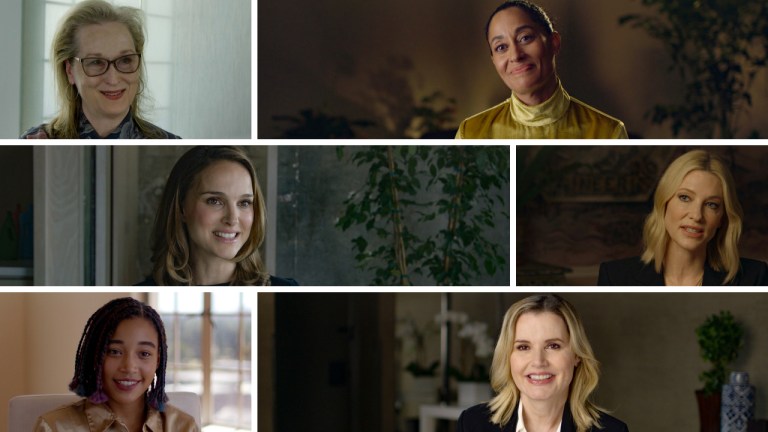
Another major issue in filmmaking is that even when female filmmakers succeed, they are not given the same opportunities as their male colleagues. Mary Lambert directed Pet Sematary (1989) which was the highest grossing horror movie of 1989 and at the time, the all time highest grossing horror movie directed by a woman. Still, her idea for a sequel was not funded. To show an example of extreme contrast, when male director Victor Salva was convicted of sexually abusing his 12-year-old lead actor on set, he was rewarded with $250k of funding by big name producer Francis Ford Coppola to make his next film, which bombed. Despite this, Coppola again financed three more of his films after his conviction. It was only public outcry that finally ended Salva’s career.
Censors, too, are tougher on female directors than their male colleagues. For instance, the woman directed film Soulmate (2013) was censored by the British Board of Film Classification (BBFC) when gorier and more violent male directed features like Hostel (2005), Nekromantik (1987) and Irréversible (2002) were not. For context, the 9-minute rape scene in Irréversible is one of the most grueling and unwatchable scenes in all of cinema.
Frequently Asked Questions About Women Directing Horror Movies
How many horror movies are directed by women?
This list catalogs over 100 horror movies directed by women.
What was the first horror movie directed by a woman?
The very first horror movie directed by a woman is probably the short Turn-of-the-Century Surgery directed by Alice Guy-Blaché in 1900.
What is the best horror movie directed by a woman?
In our opinion the best horror movie directed by a woman is Watcher (2022) directed by Chloe Okuno. See this list of the top 10 horror movies directed by women.
Who is the most successful female horror director?
Emma Tammi holds the record for the highest grossing horror movie directed by a woman with Five Nights at Freddy’s (2023). It grossed $296 million worldwide.
Previously, Nia DaCosta was responsible for the highest-grossing horror movie directed by a woman with Candyman (2021), which grossed $77.4 million worldwide. With this film she also became the first black woman to direct a movie that opened at #1 at the box office.
Before that Mary Lambert grossed $57.5 million at the box office with Pet Sematary (1989).
What is the highest rated horror movie directed by a woman?
According to Rotten Tomatoes, the highest rated horror movies directed by women are:
- Huesera: The Bone Woman (2022) directed by Michelle Garza Cervera
- The Babadook (2014) directed by Jennifer Kent
- Tigers Are Not Afraid (2017) directed by Issa López
- Hellbender (2021) directed by John Adams, Zelda Adams, Toby Poser
- Sissy (2022) directed by Hannah Barlow and Kane Senes
- Good Manners (2017) directed by Juliana Rojas and Marco Dutra
- A Girl Walks Home Alone at Night (2014) directed by Ana Lily Amirpour
- The Love Witch (2017) directed by Anna Biller
- Most Beautiful Island (2017) directed by Ana Asensio
- Raw (2016) directed by Julia Ducournau
On Letterboxd, the highest rated horror movies directed by women are:
- American Psycho (2000) directed by Mary Harron
- Humanist Vampire Seeking Consenting Suicidal Person (2024) directed by Ariane Louis-Seize
- A Girl Walks Home Alone at Night (2014) directed by Ana Lily Amirpour
- Ghostwatch (1992) directed by Lesley Manning
- Raw (2016) directed by Julia Ducournau
- The Other Side of the Underneath (1972) directed by Jane Arden
- Titane (2021) directed by Julia Ducournau
- Tigers Are Not Afraid (2017) directed by Issa López
- Celia (1989) directed by Ann Turner
- Ravenous (1999) directed by Antonia Bird
See above for Creepy Catalog’s top 10 horror movies directed by women.
Why aren’t there more female directors?
There is no lack of talented female directors. There is a lack of opportunities and funding for talented female directors.
There have always been women working behind the camera in Hollywood. The first narrative film ever was made by a woman, Alice Guy-Blaché. It has historically been easier for (white) men to advance in the industry and secure funding for their films than (white) women (and harder for non-white filmmakers of all genders). This is why we see such a gendered disparity in directing (e.g.: of the top 250 movies of 2018, 91% were directed by men).
Achievements by women in filmmaking are also often left out of history books, or credit is taken by or redistributed to men. For instance, despite directing the highest grossing horror movie of 1989, Mary Lambert was not included in the “exhaustive” book Horror Film Directors 1931-1990. It’s unclear why female directors of horror movies from the era covered in the book (Ida Lupino, Karen Arthur, Kathryn Bigelow, Mary Lambert) were excluded.
Are movies directed by women automatically feminist?
Simply because a film is directed by a woman does not make it a feminist movie.
For instance, Barbara Peeters directed Humanoids from the Deep (1980) but asked for her name to be removed from the project after producer Roger Corman had explicit rape scenes shot and added into the film without her permission. Obviously an exploitation film that sexualizes rape for viewer’s erotic entertainment is not a feminist film.
It is also possible for men to direct a feminist film. Neil Marshall directed The Descent (2005), a horror movie with an ensemble cast of women (the only male character dies a few minutes in) that focuses on female friendships and could be considered a feminist horror movie. Ari Aster’s Midsommar (2019) explores the emotional horror of being held hostage in a toxic relationship. This also could be considered a feminist approach to horror. Another example is the cult classic Ginger Snaps (2000), a favorite of feminist horror fans which was directed by a man, John Fawcett.
Why do most horror movies have a female lead character?
In Men, Women, and Chain Saws feminist film theorist Carol J. Clover suggests that the reason there are so many female protagonists in horror compared to other film genres is because audiences are more comfortable seeing women experience vulnerable emotions like terror and agony. Because gender roles propose that men should be seen as strong and dominant, audiences become less immersed in the film when they see men running for their lives. Female final girls solve this problem as both men and women will identify with the protagonist without the internal chatter of whether the character’s gender identity is in question.
What is a good introduction to feminist filmmaking?
A good introduction to gendered issues in film is the documentary This Changes Everything (2018) and the book Women Make Horror edited by Alison Peirse.
We also enjoy following The Future of Film is Female.
